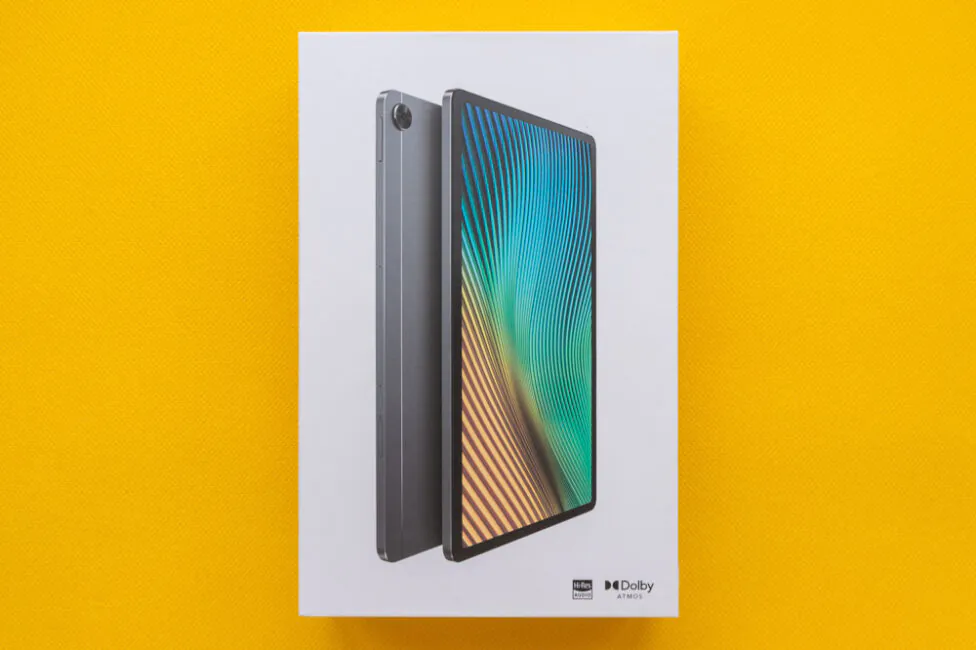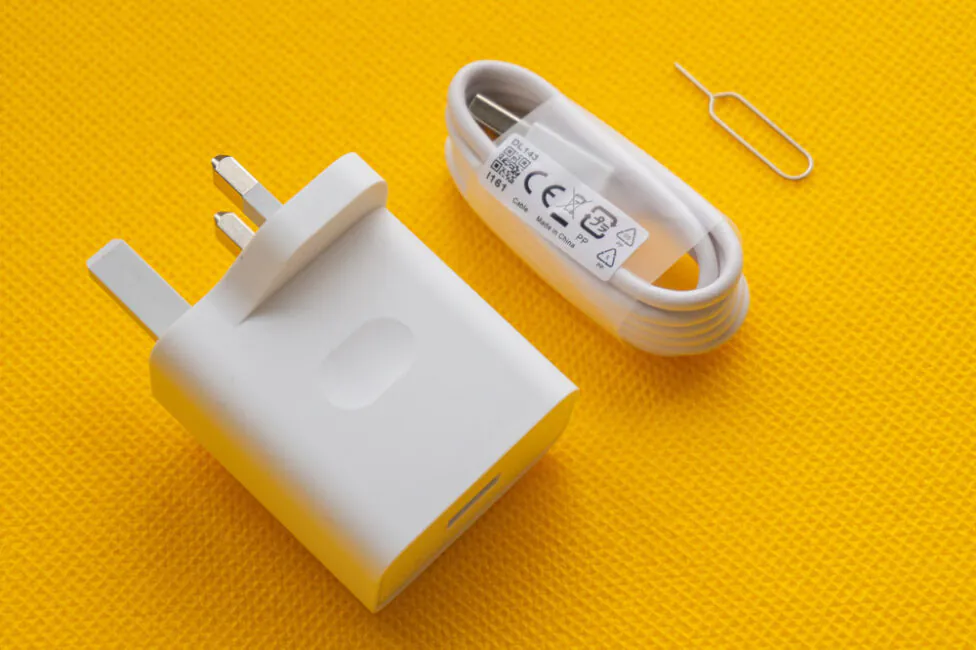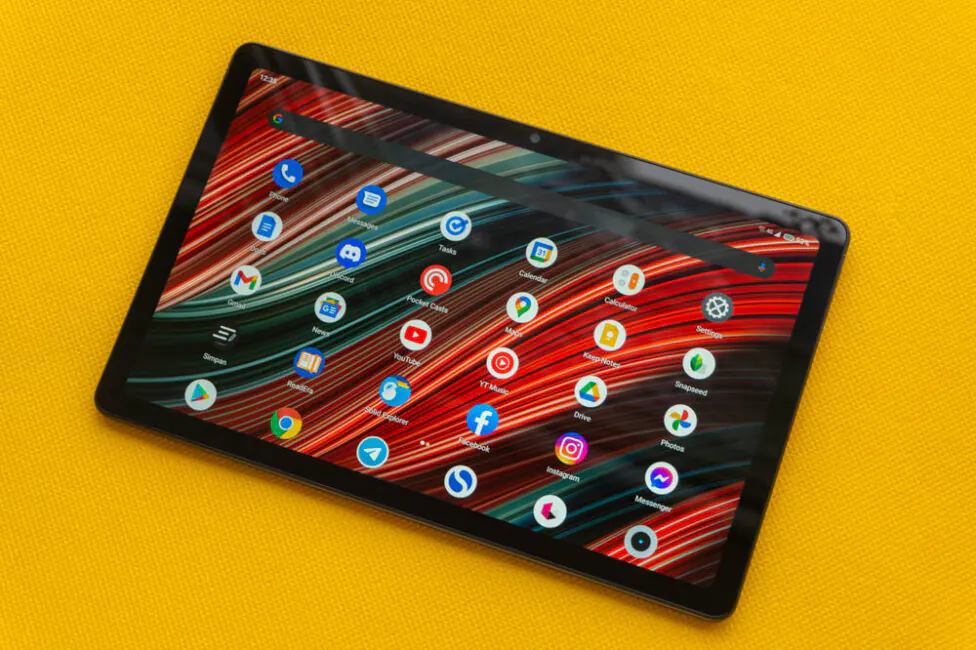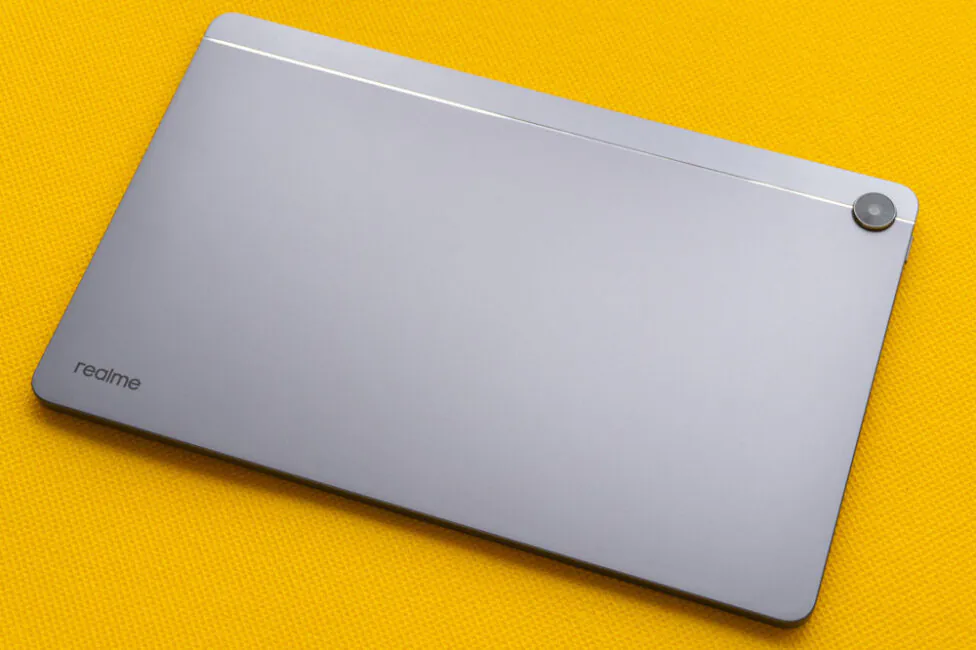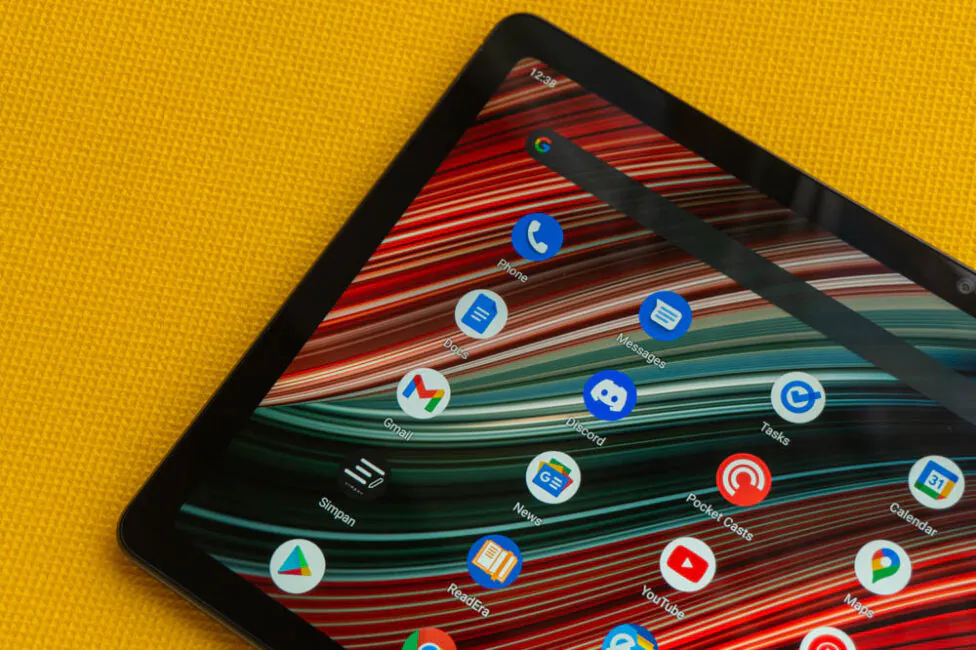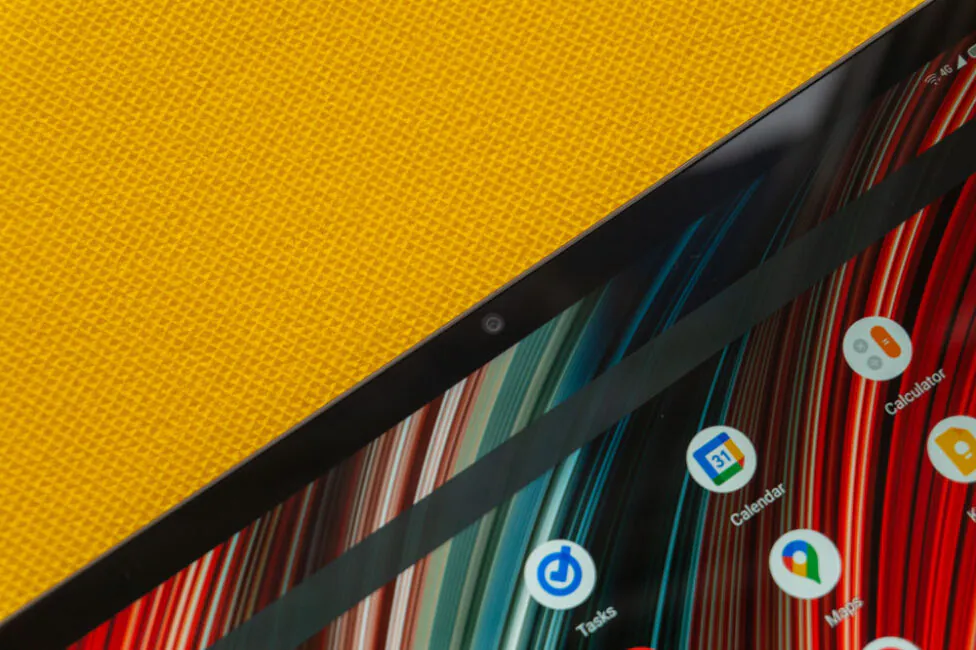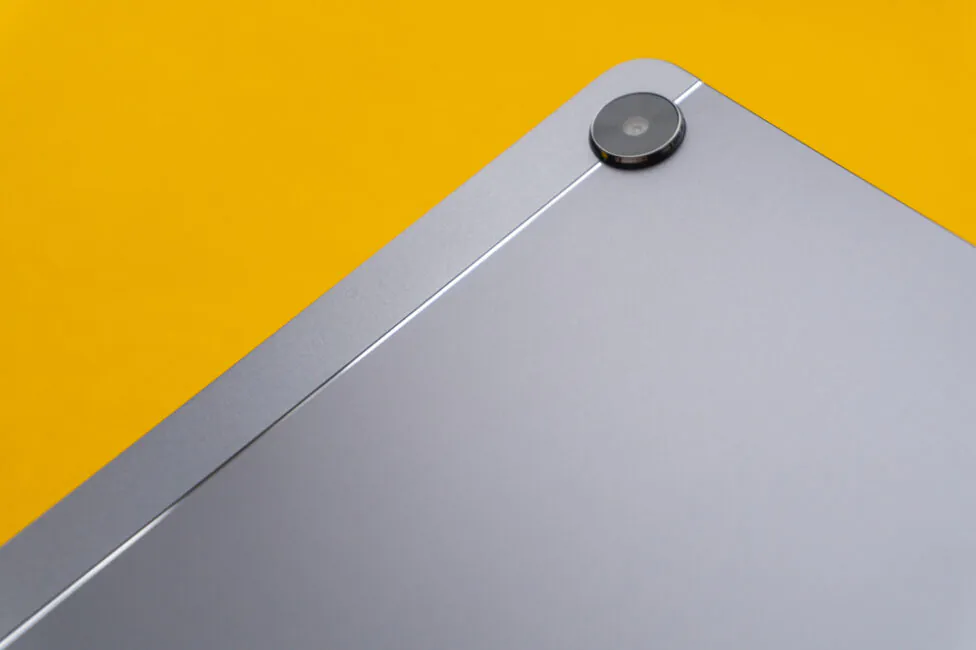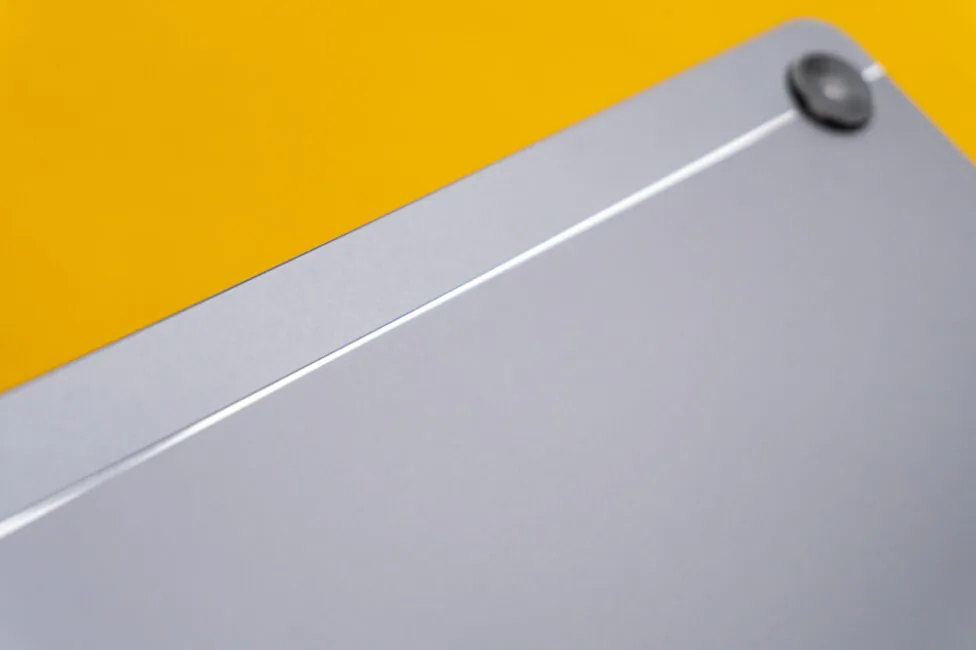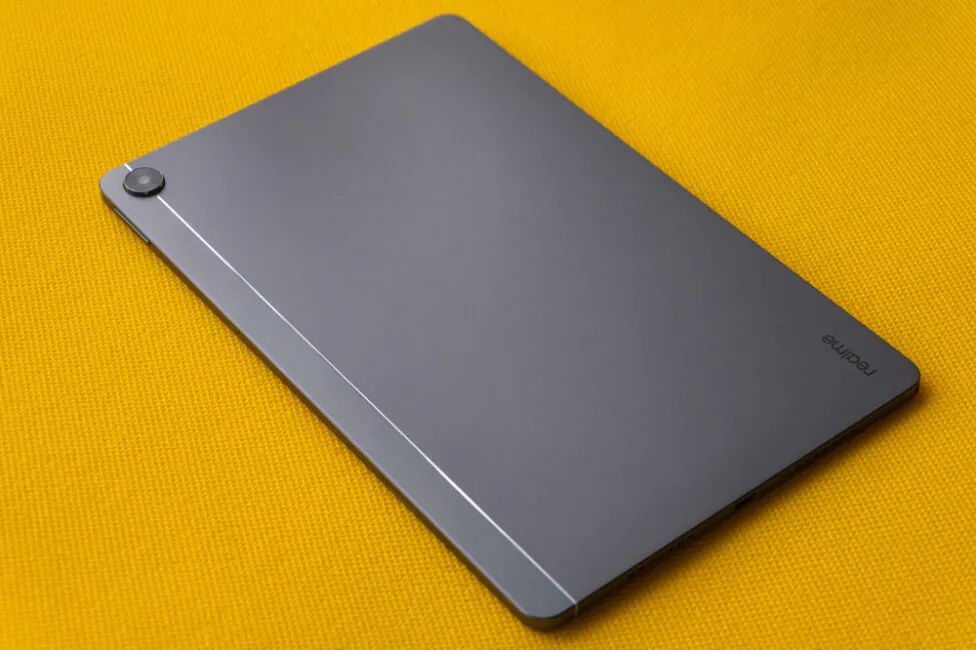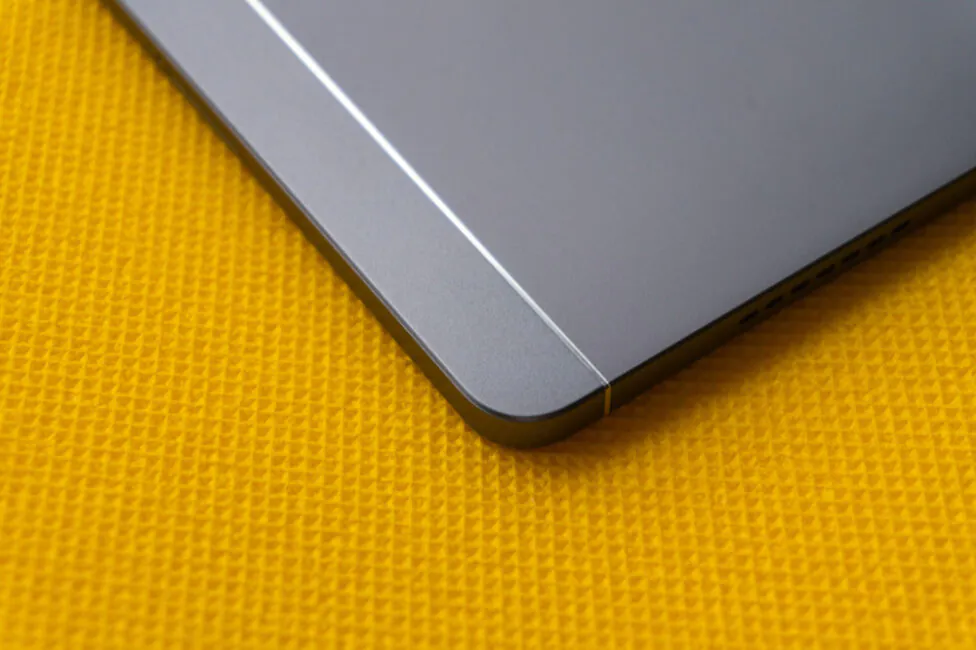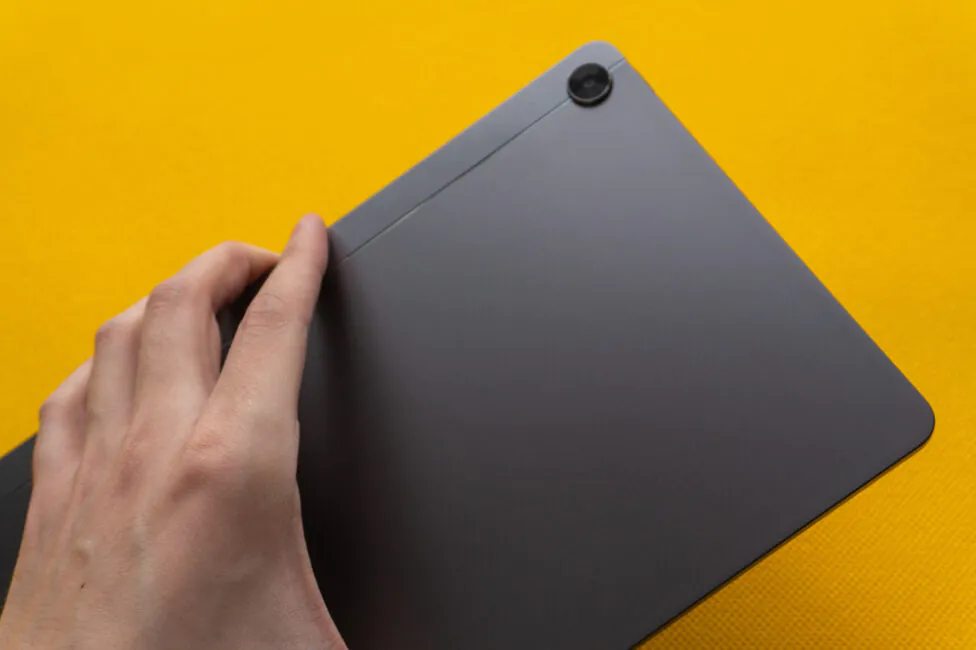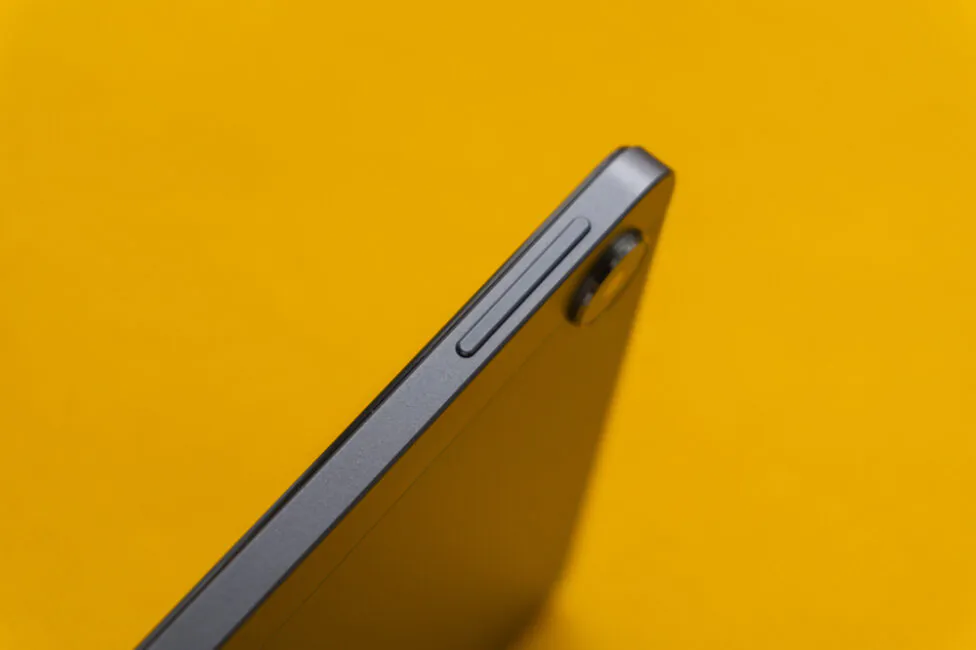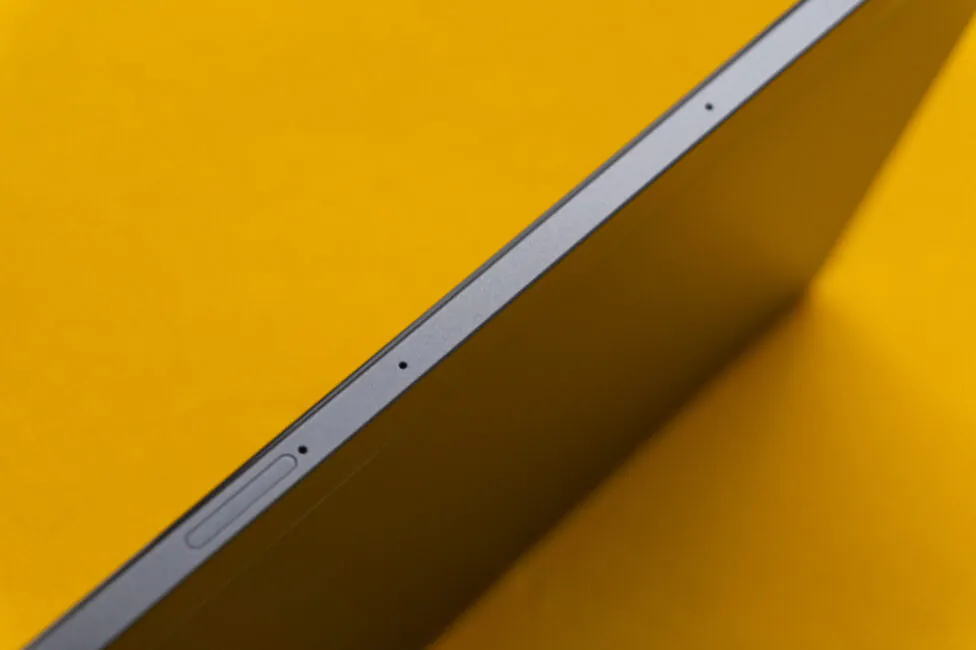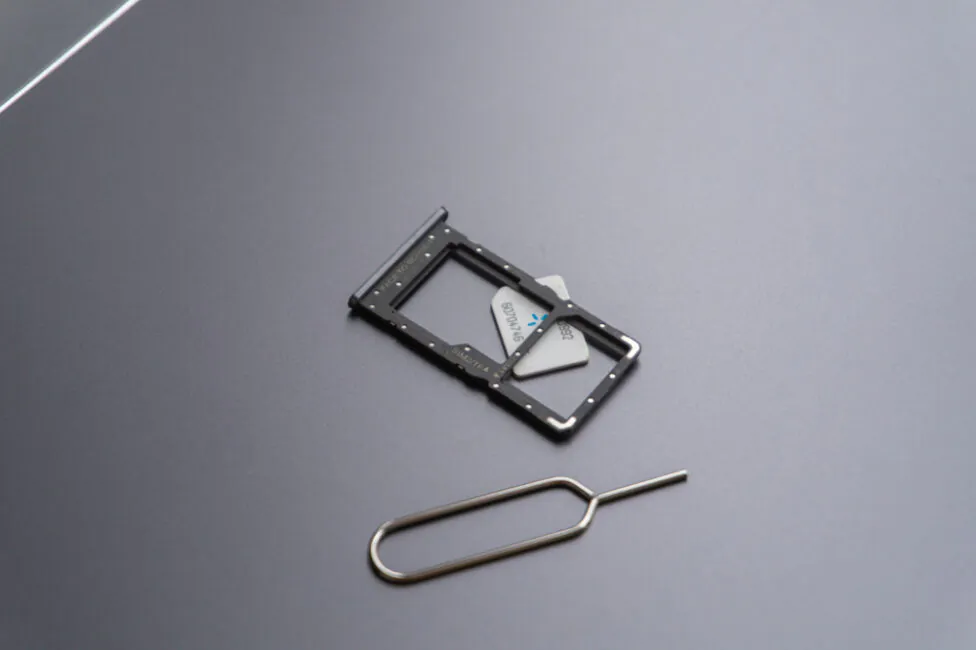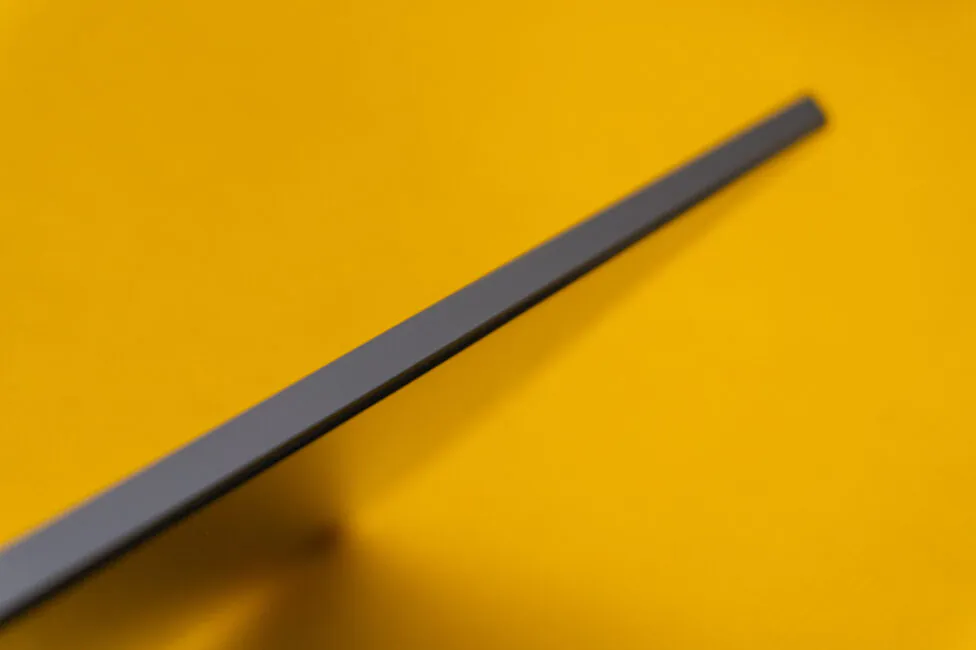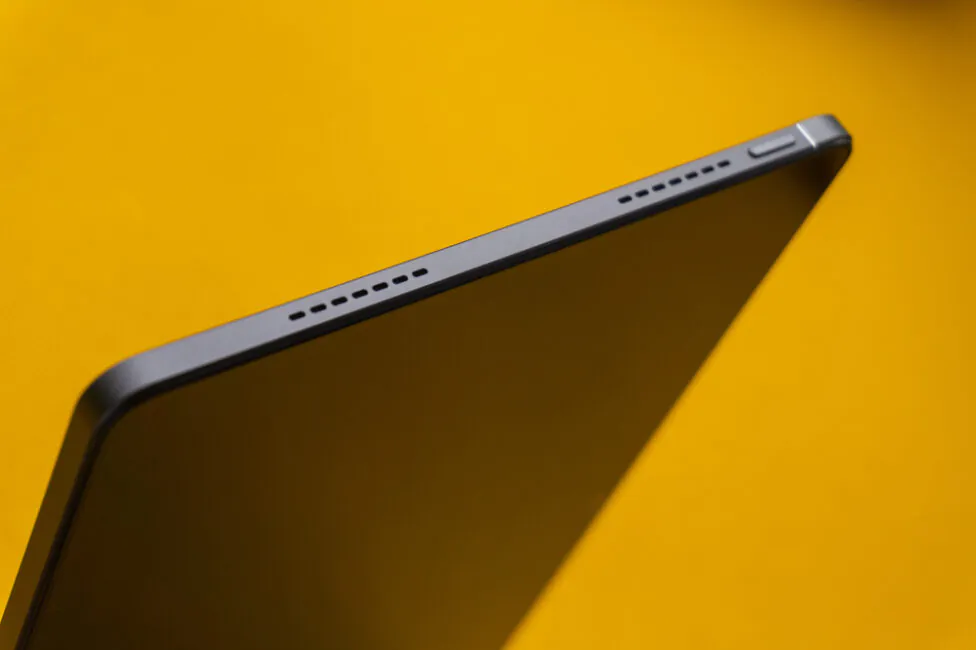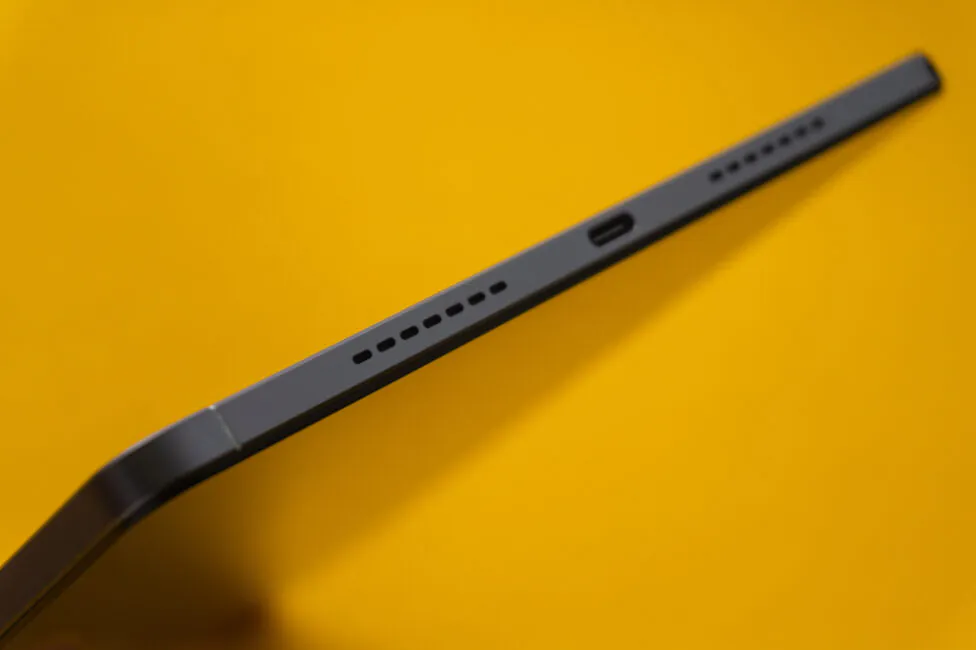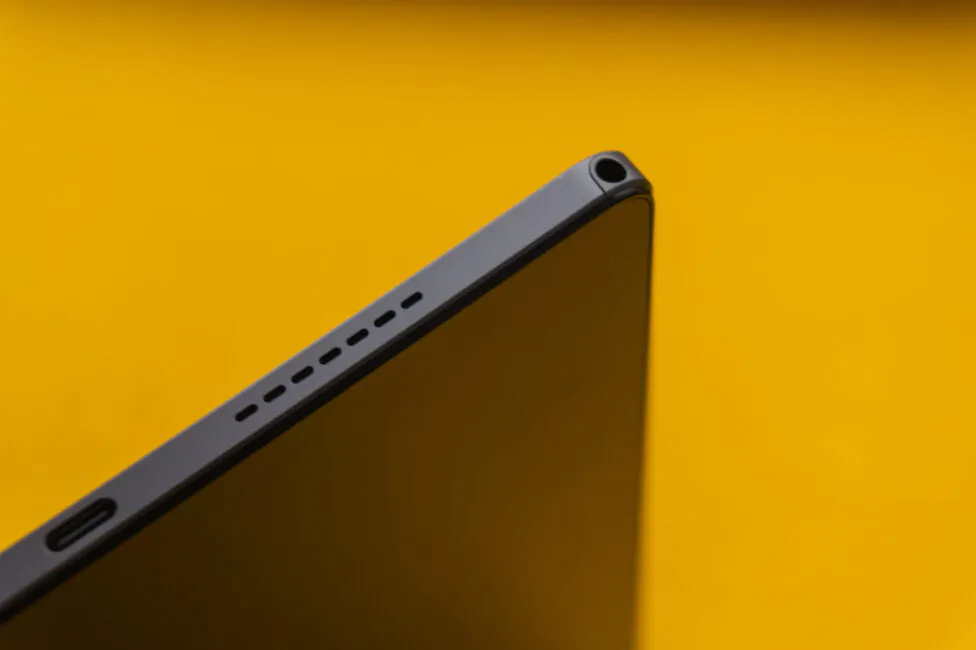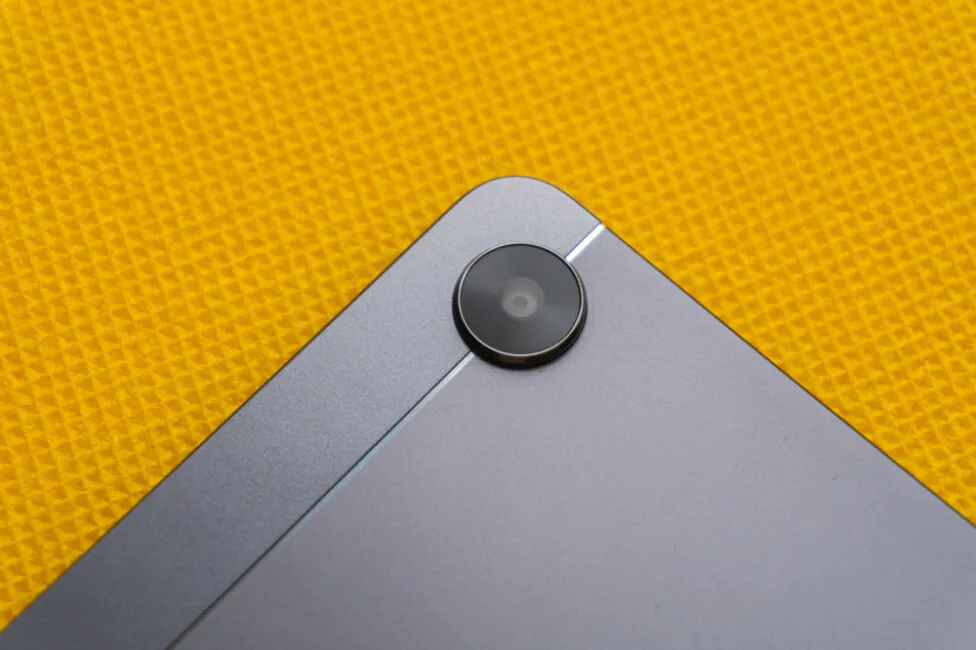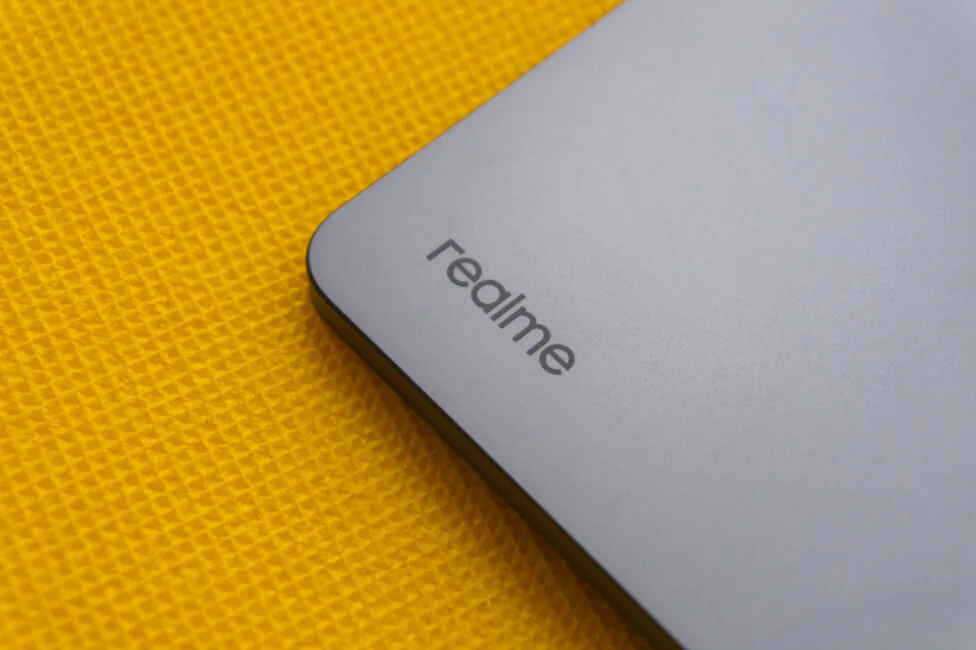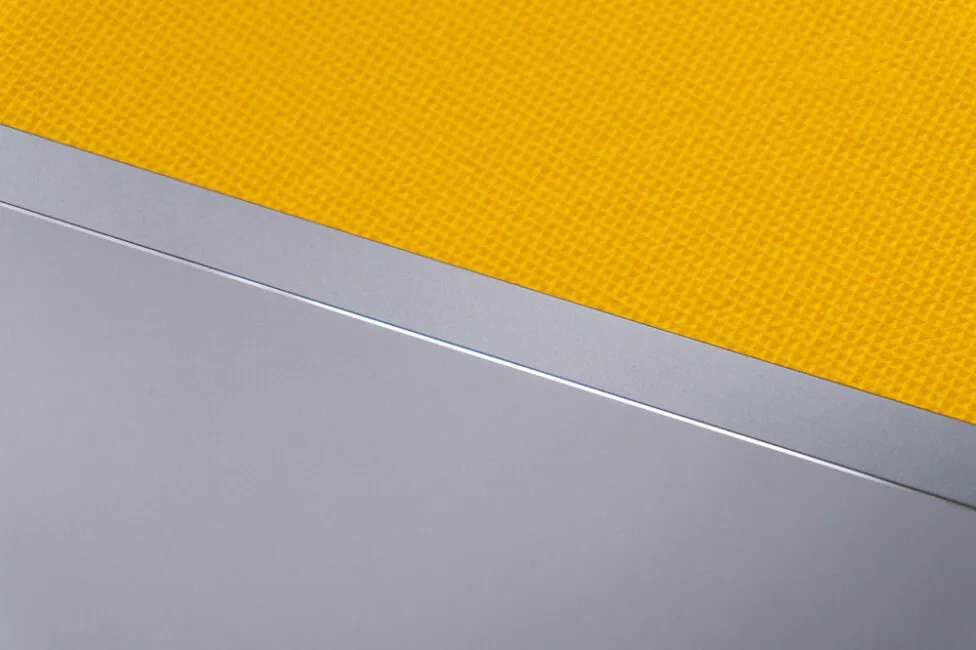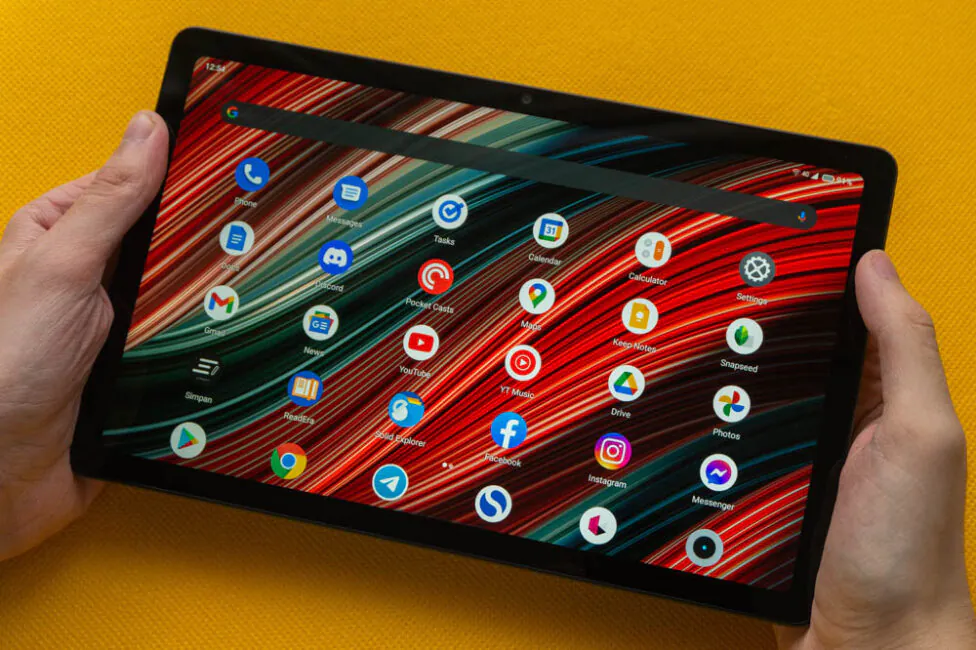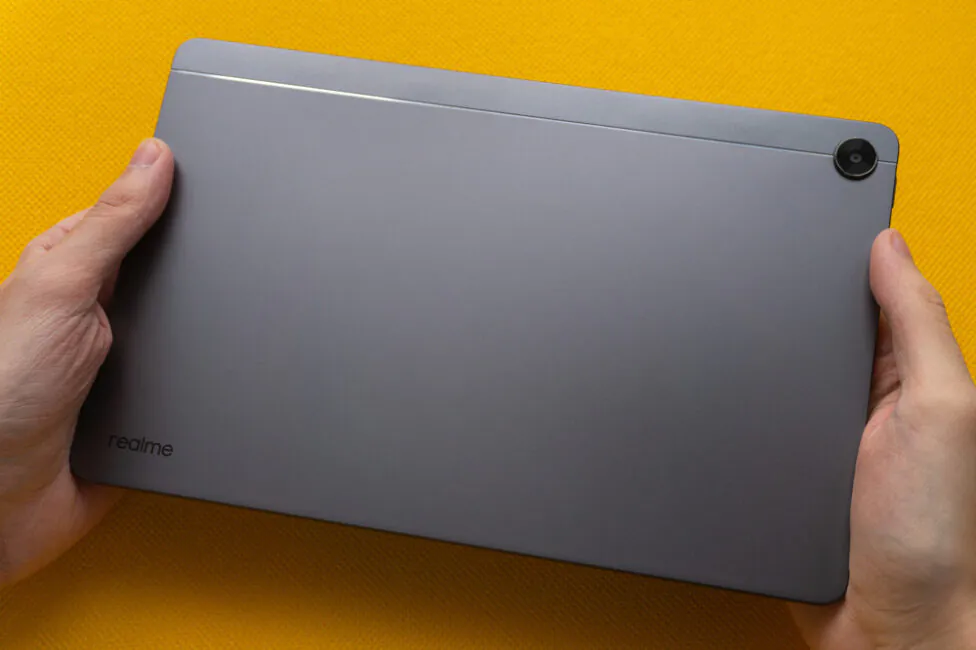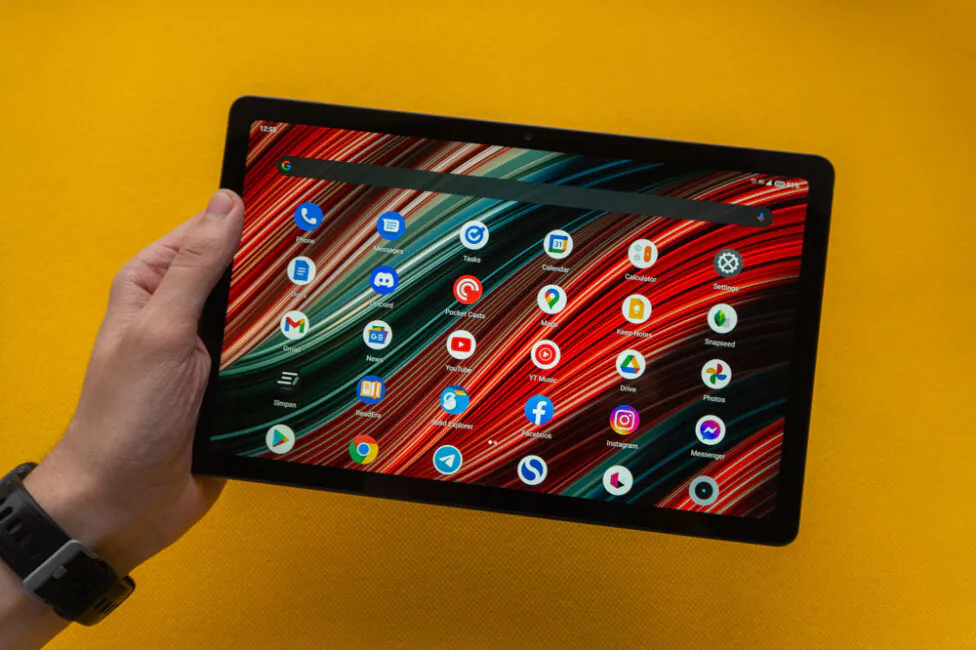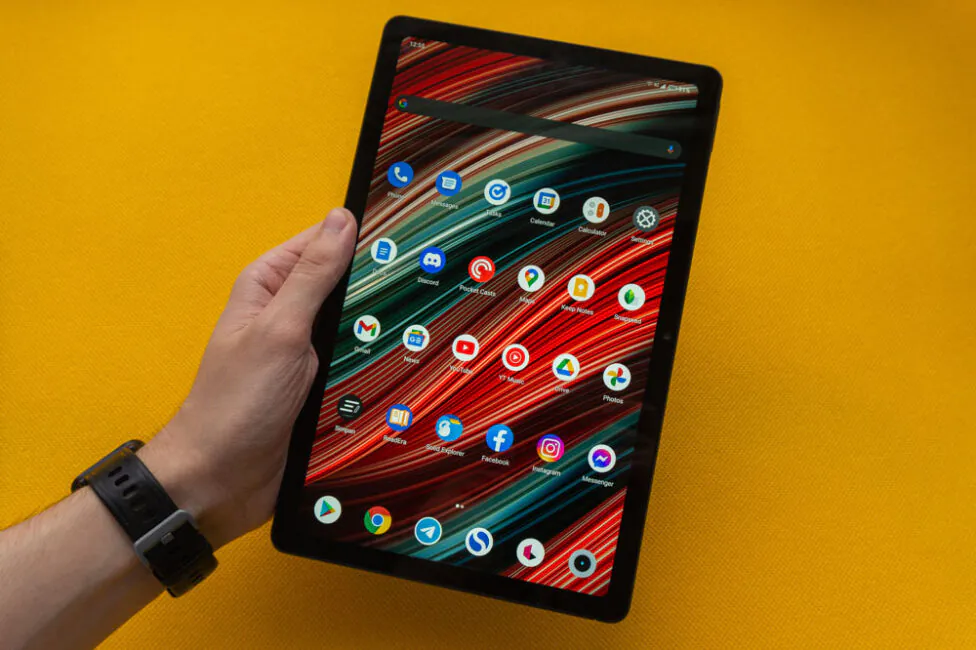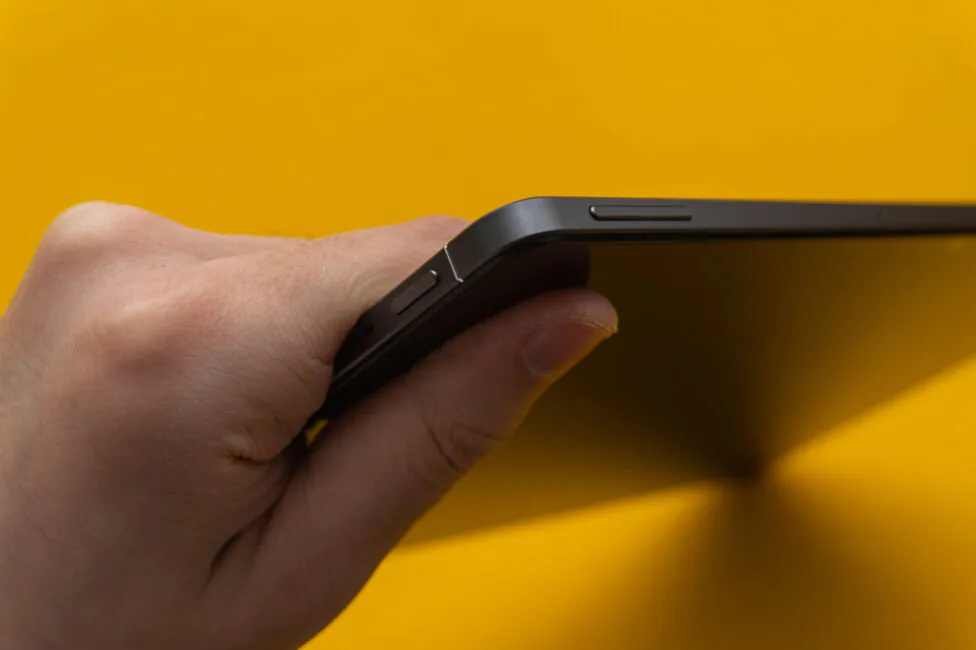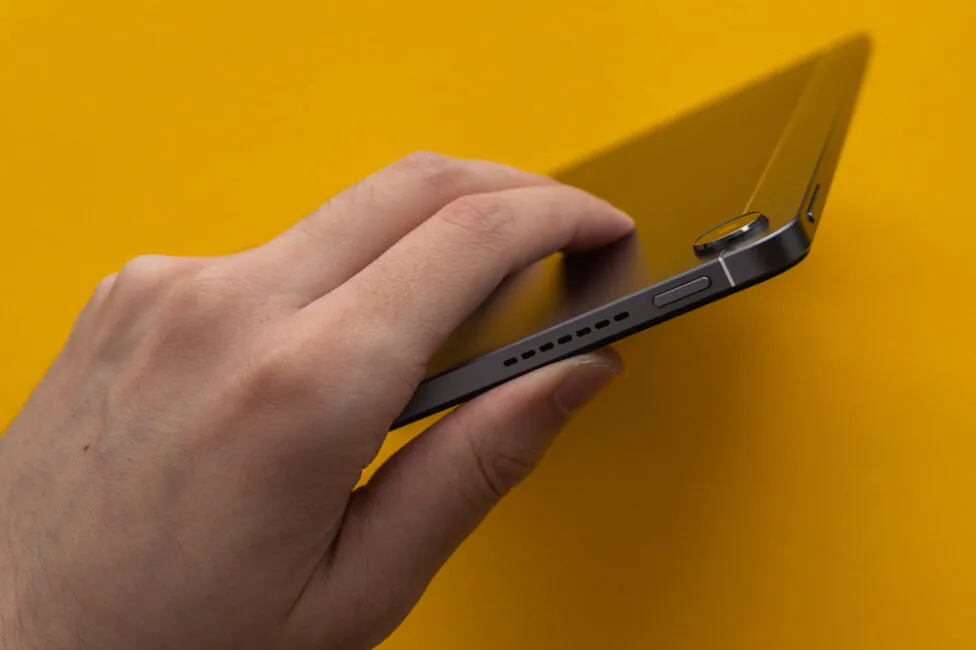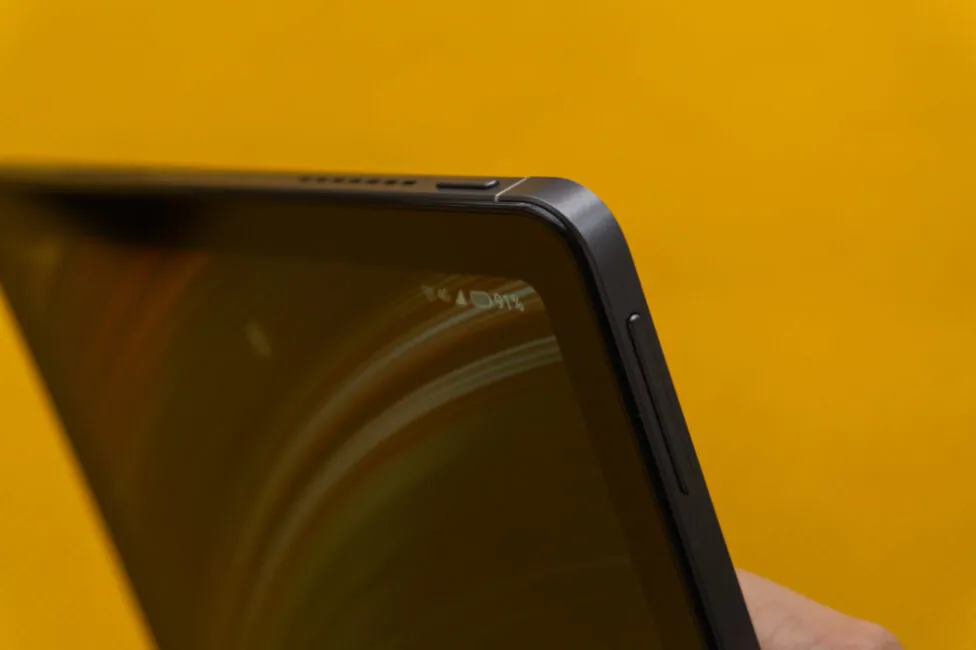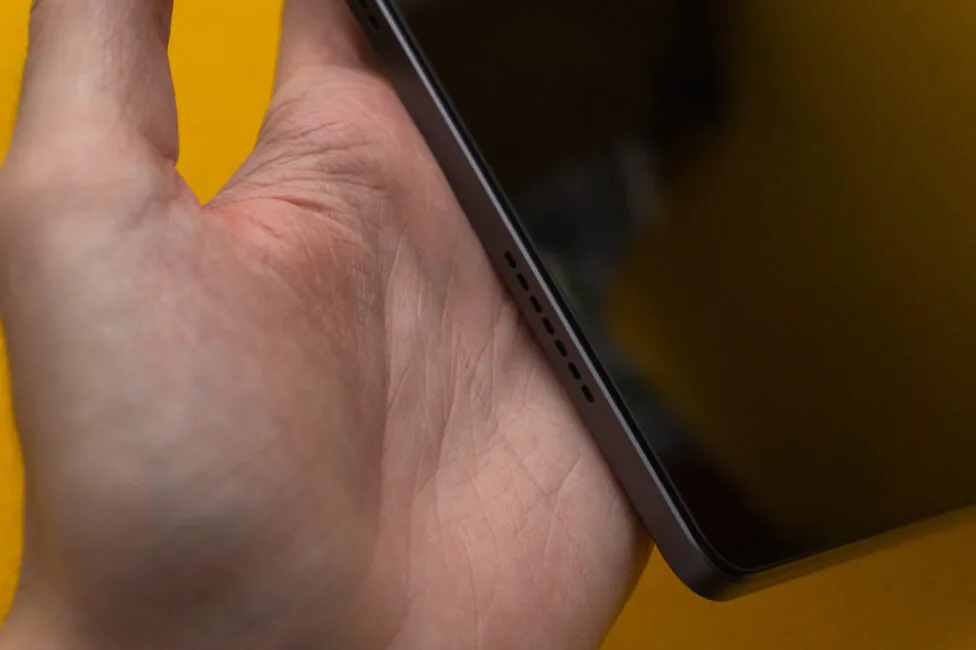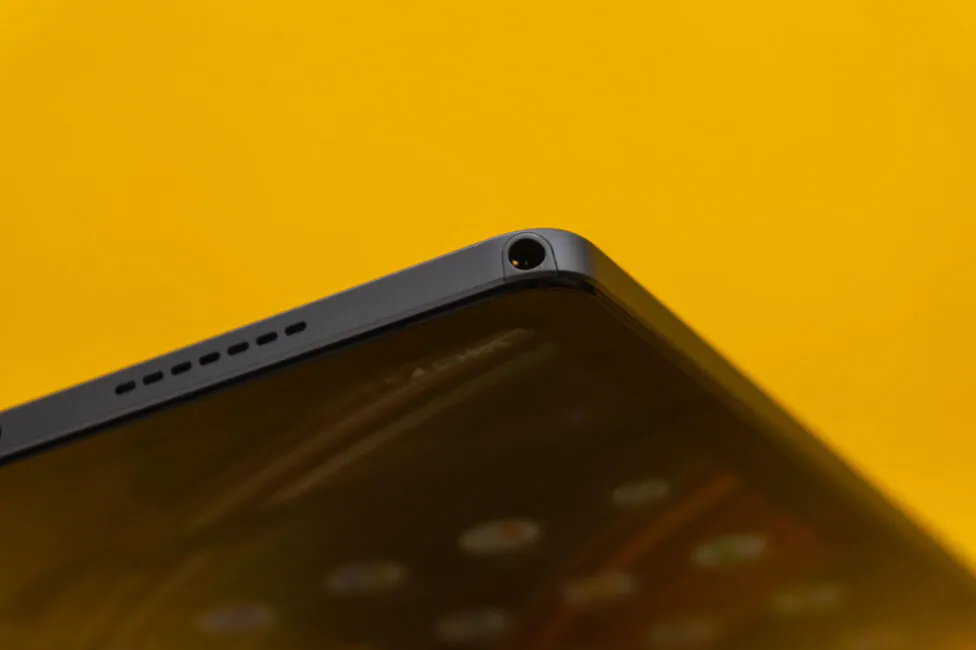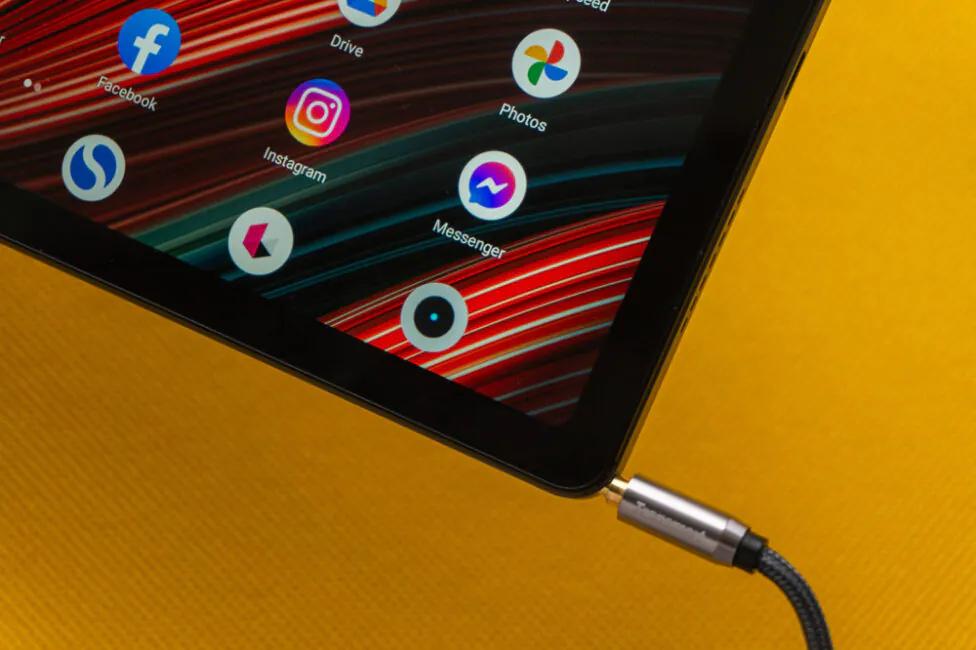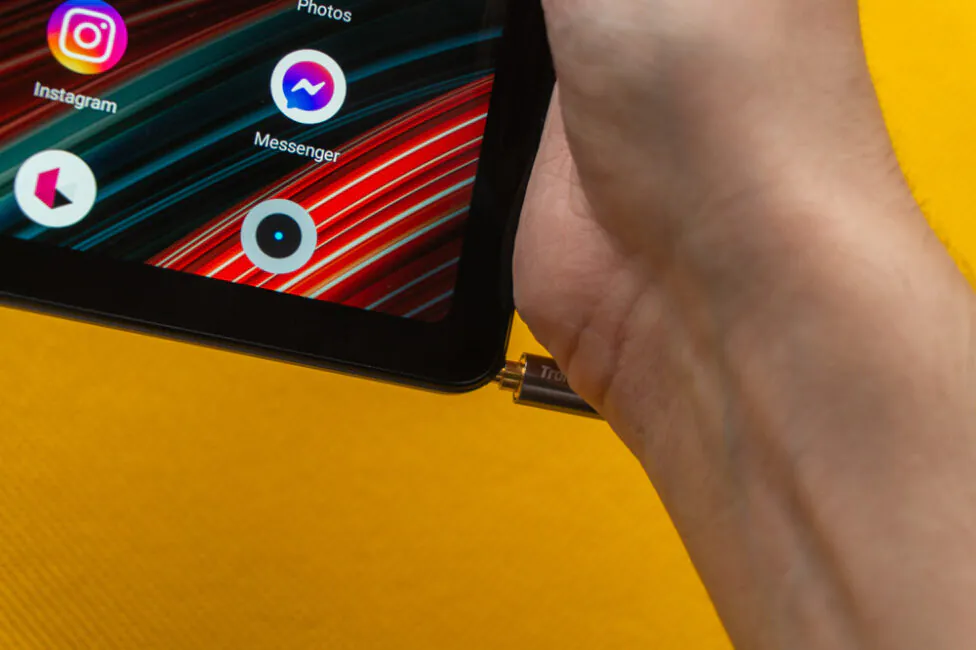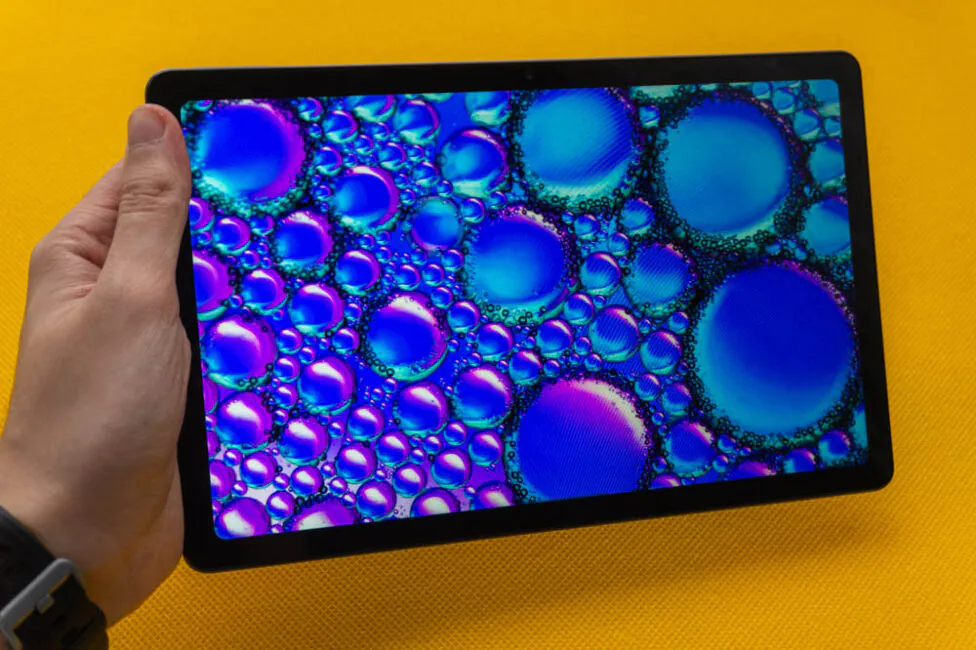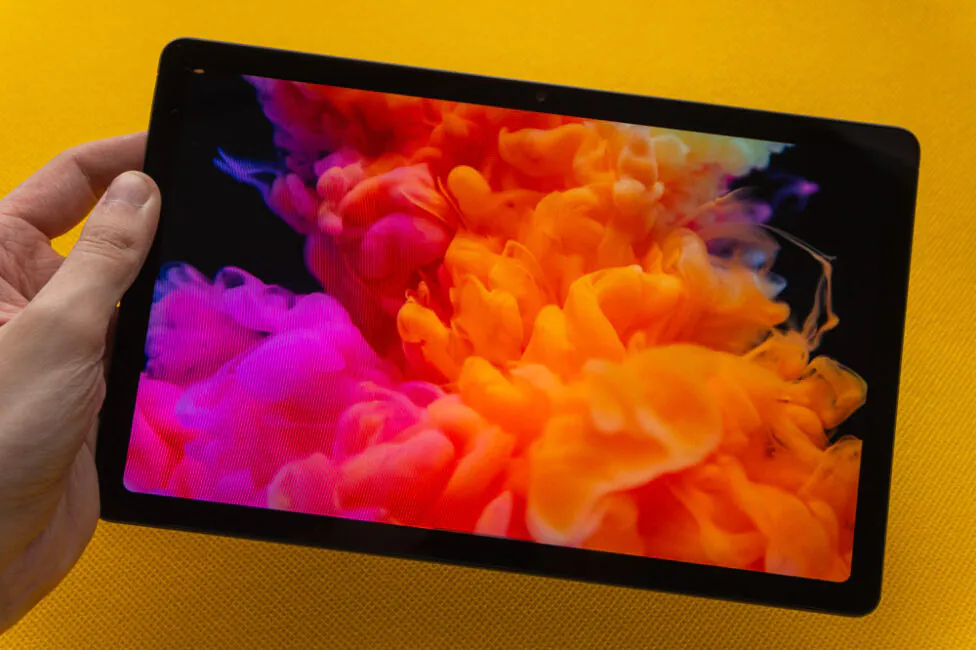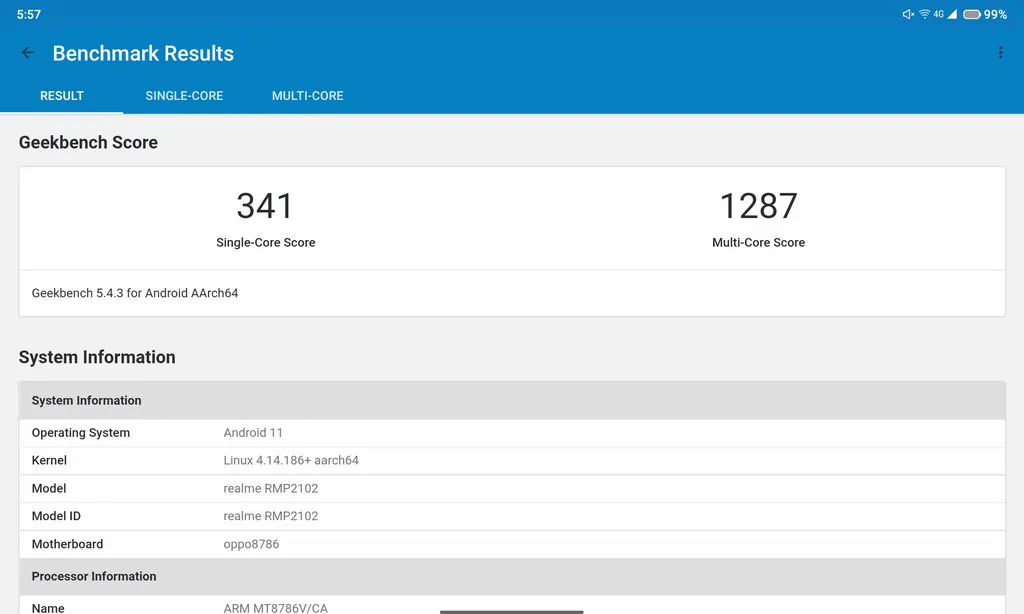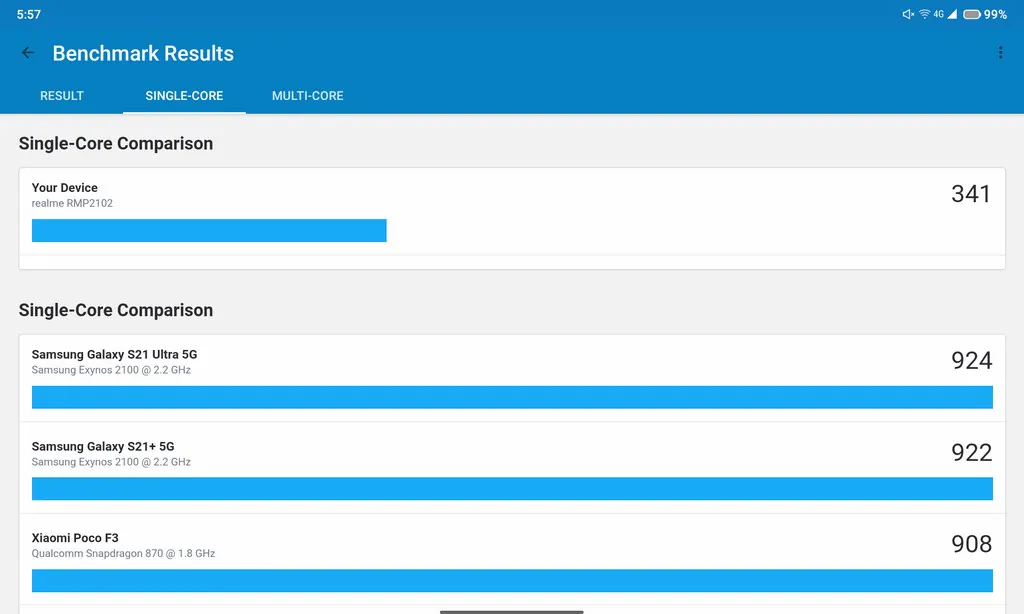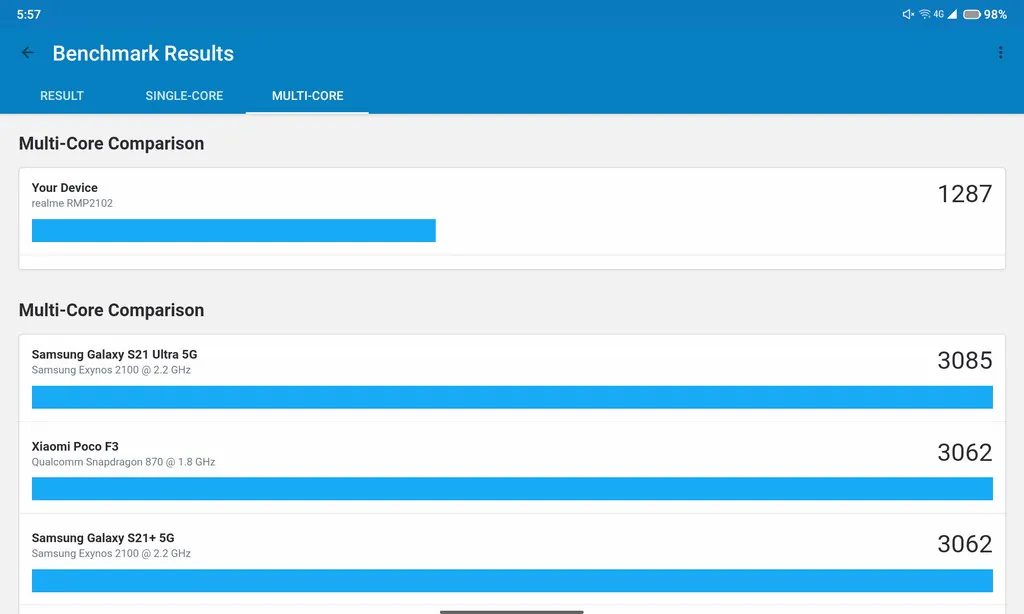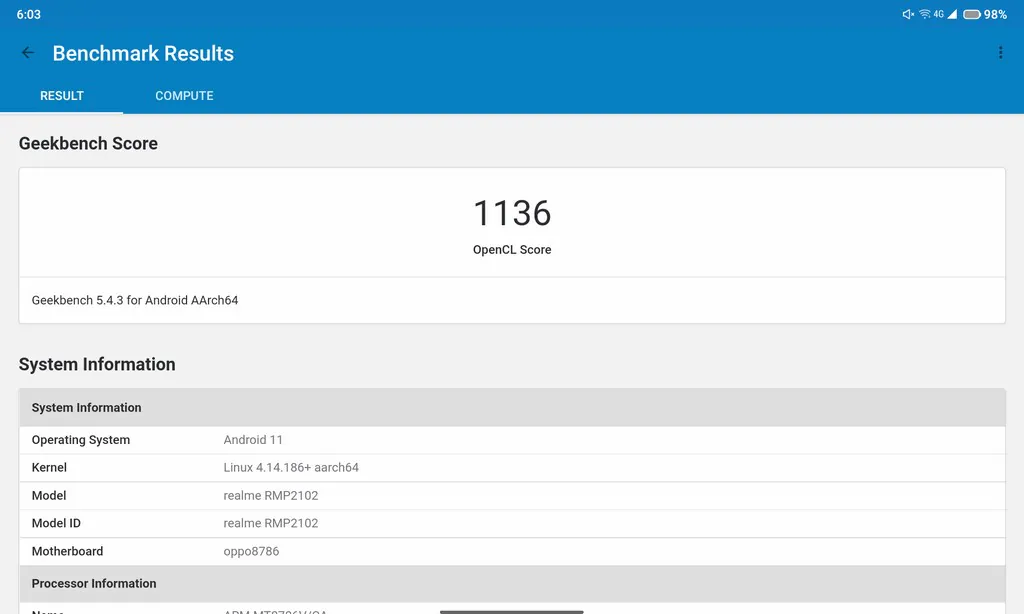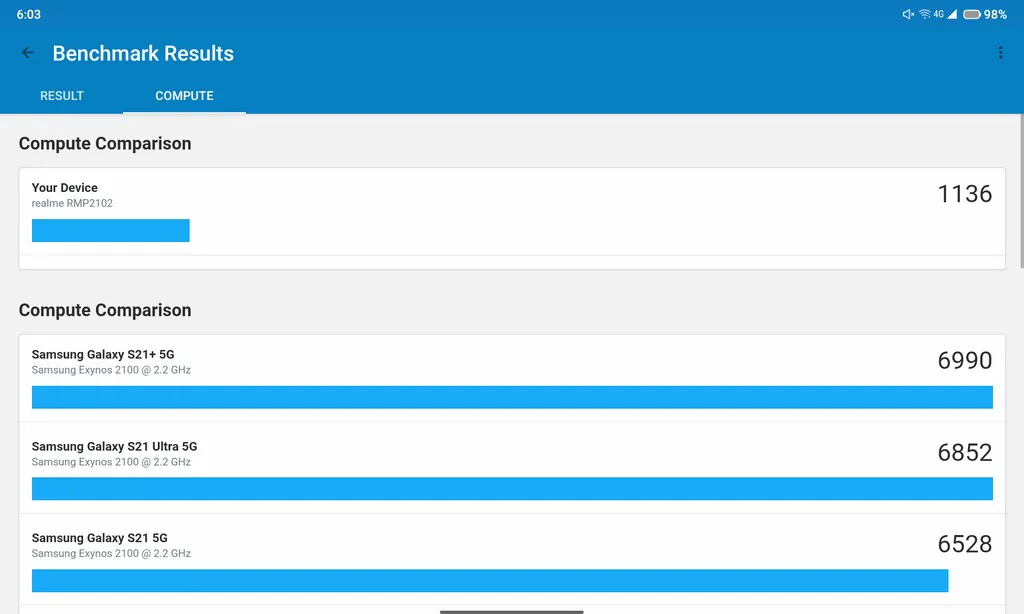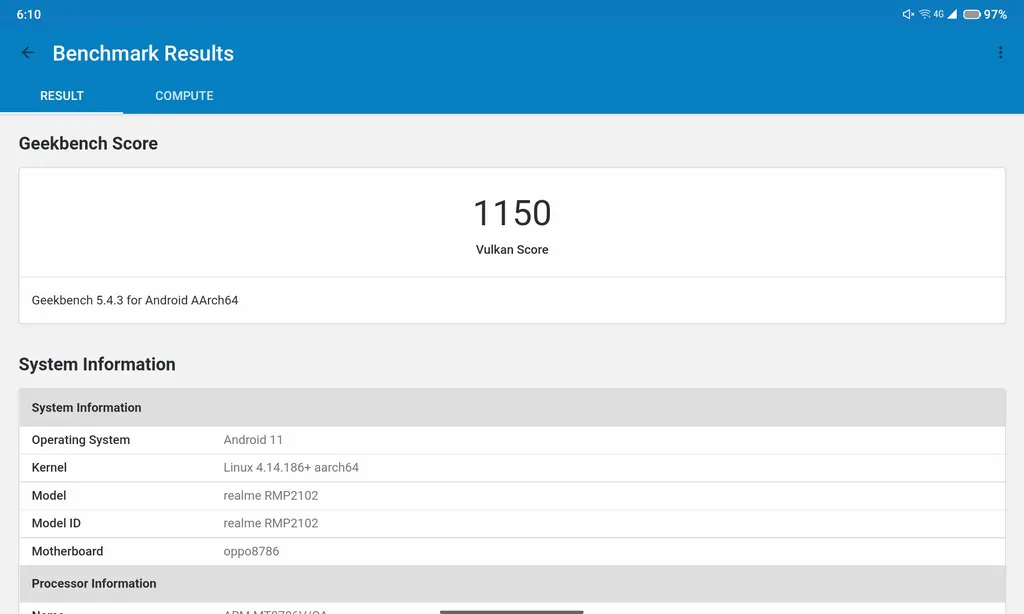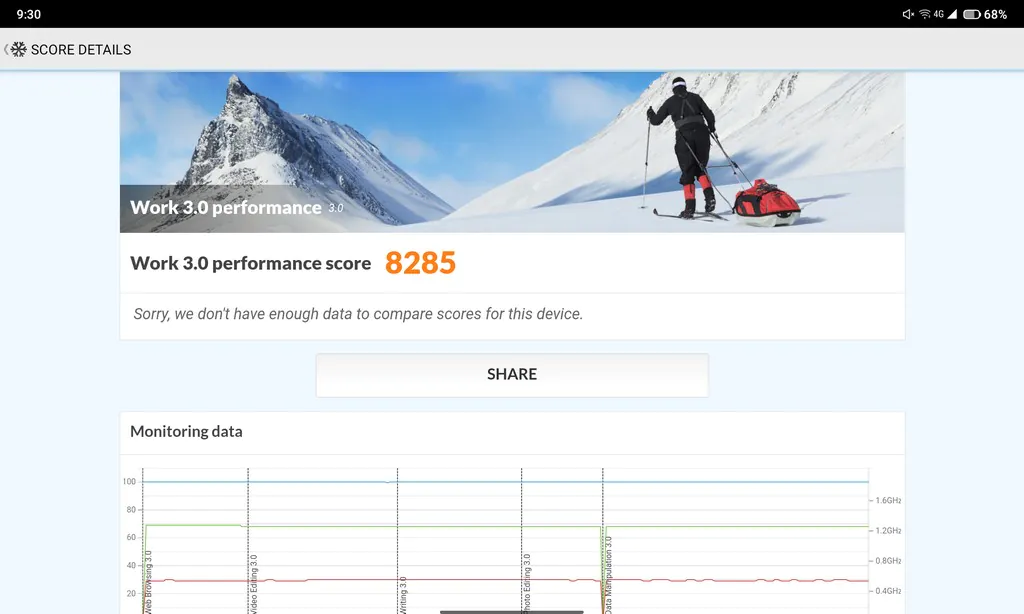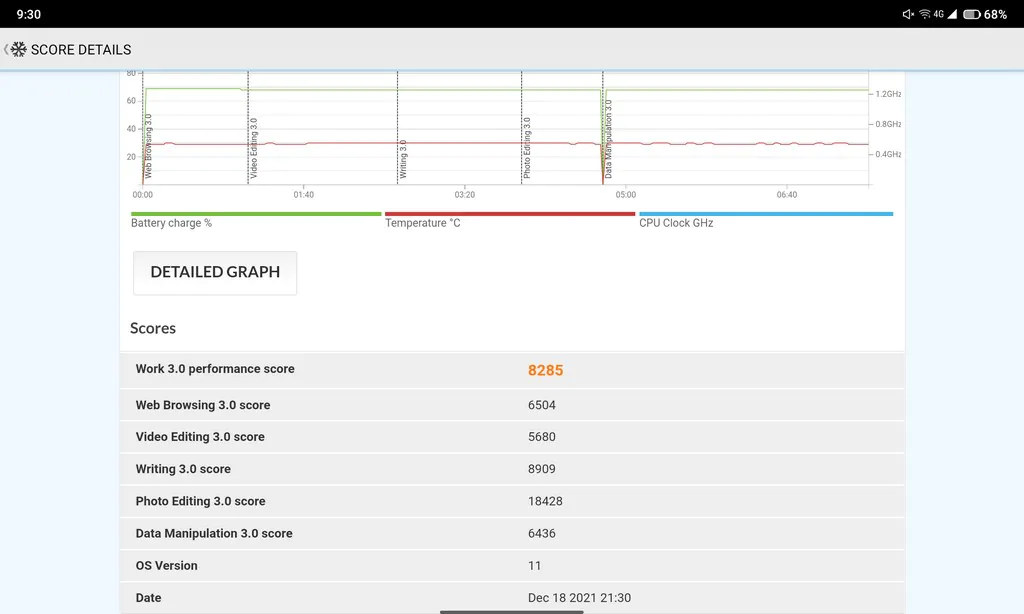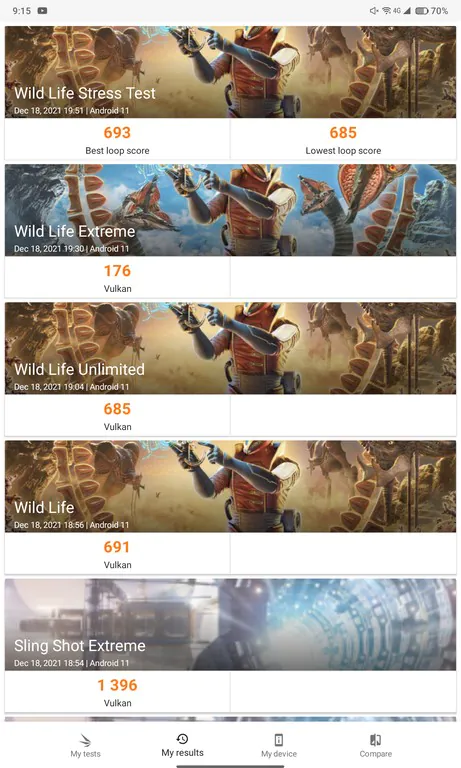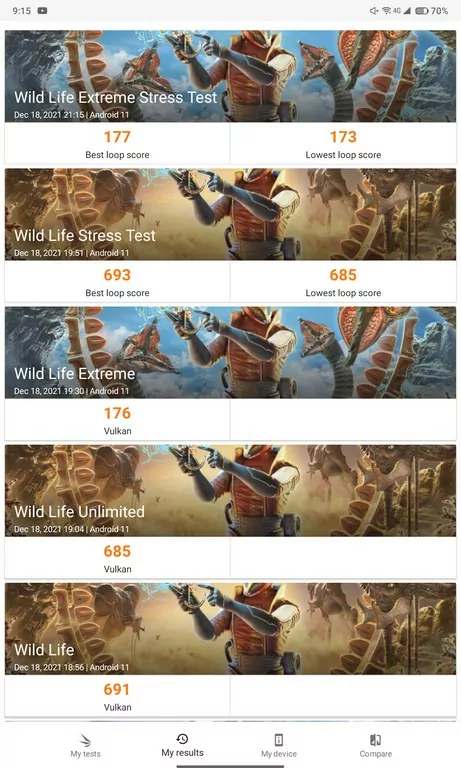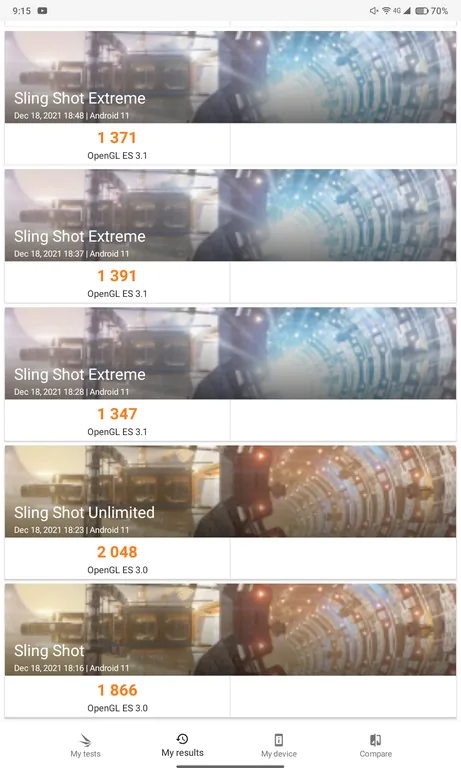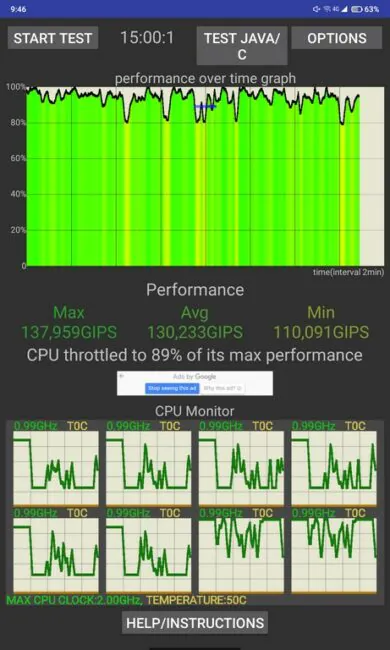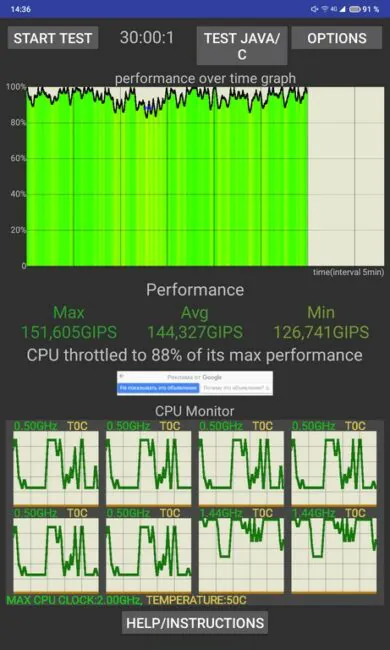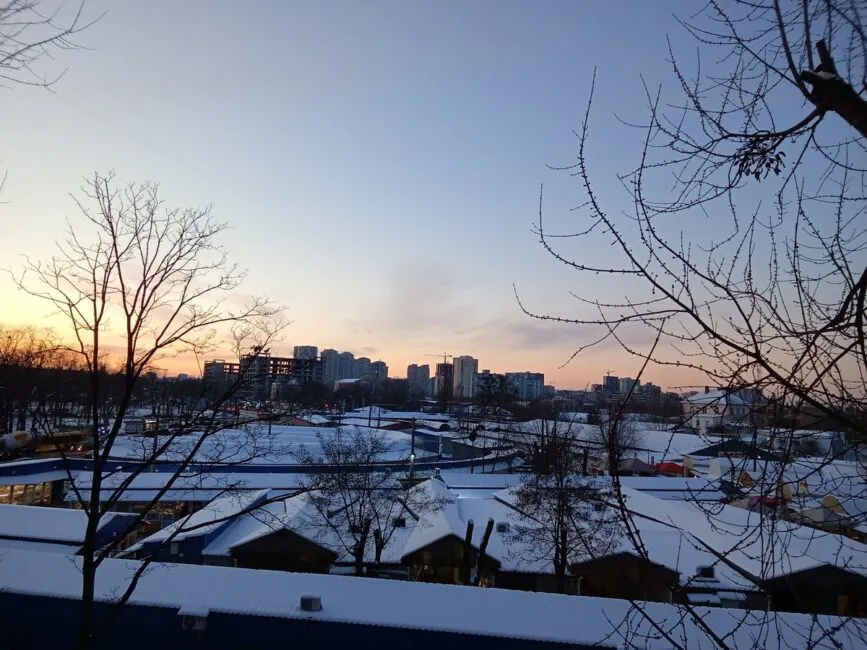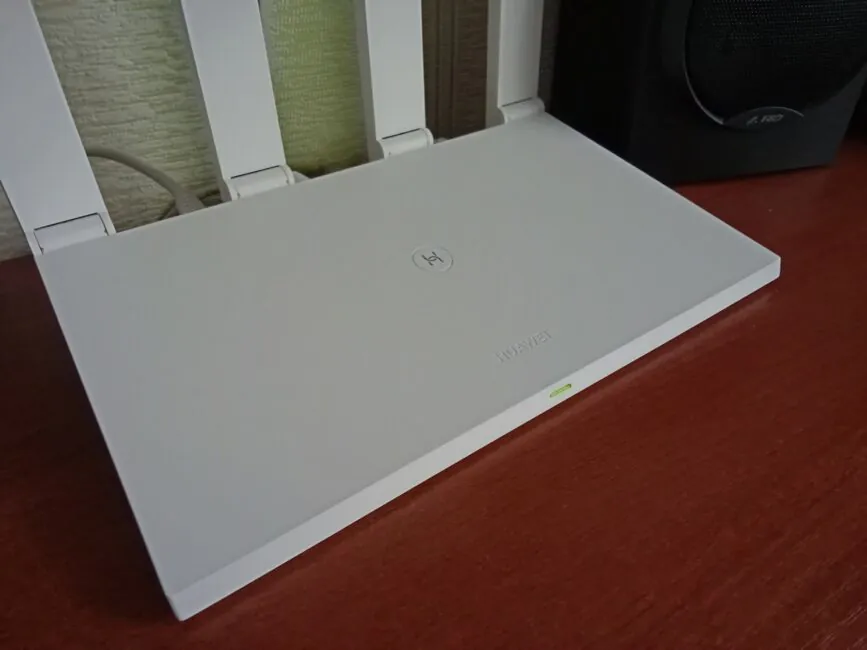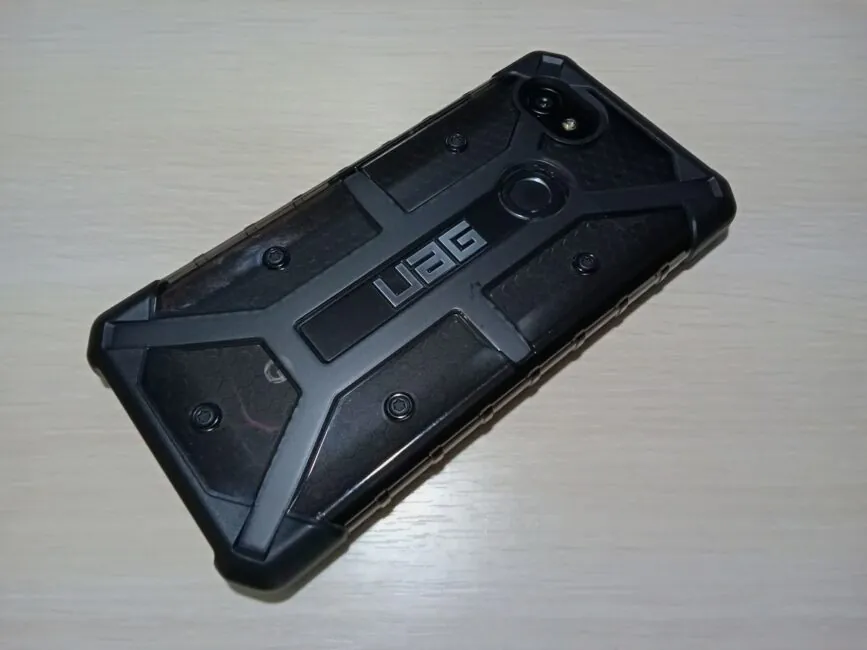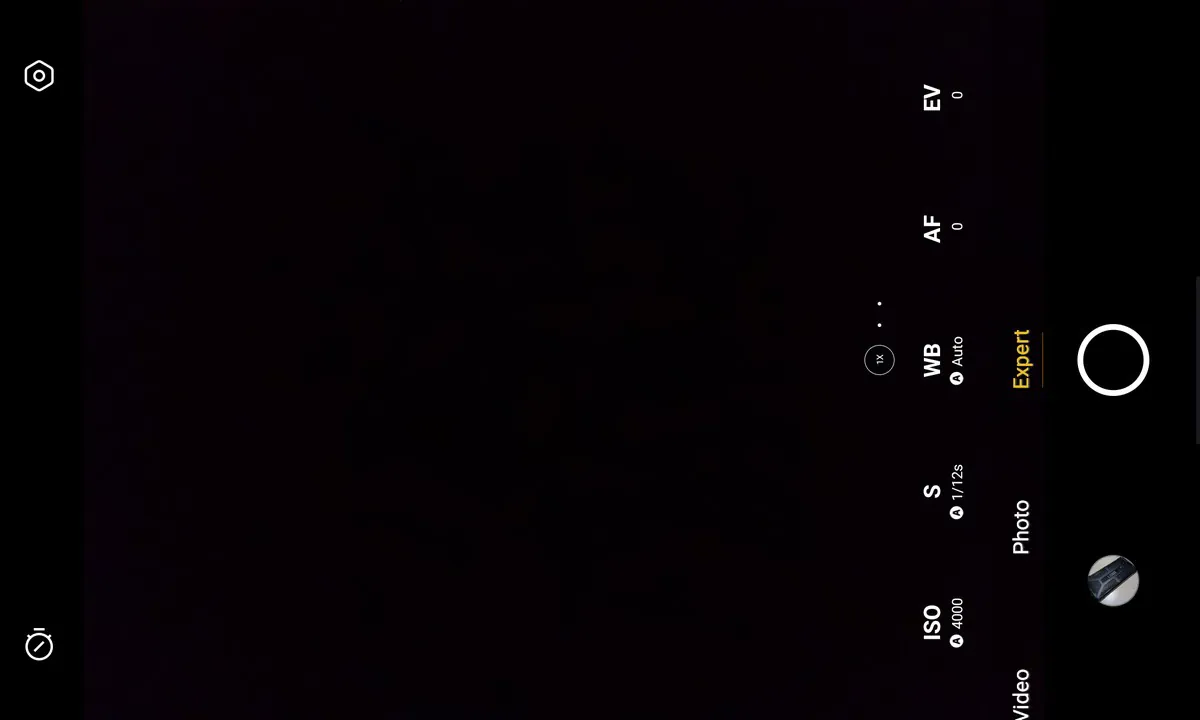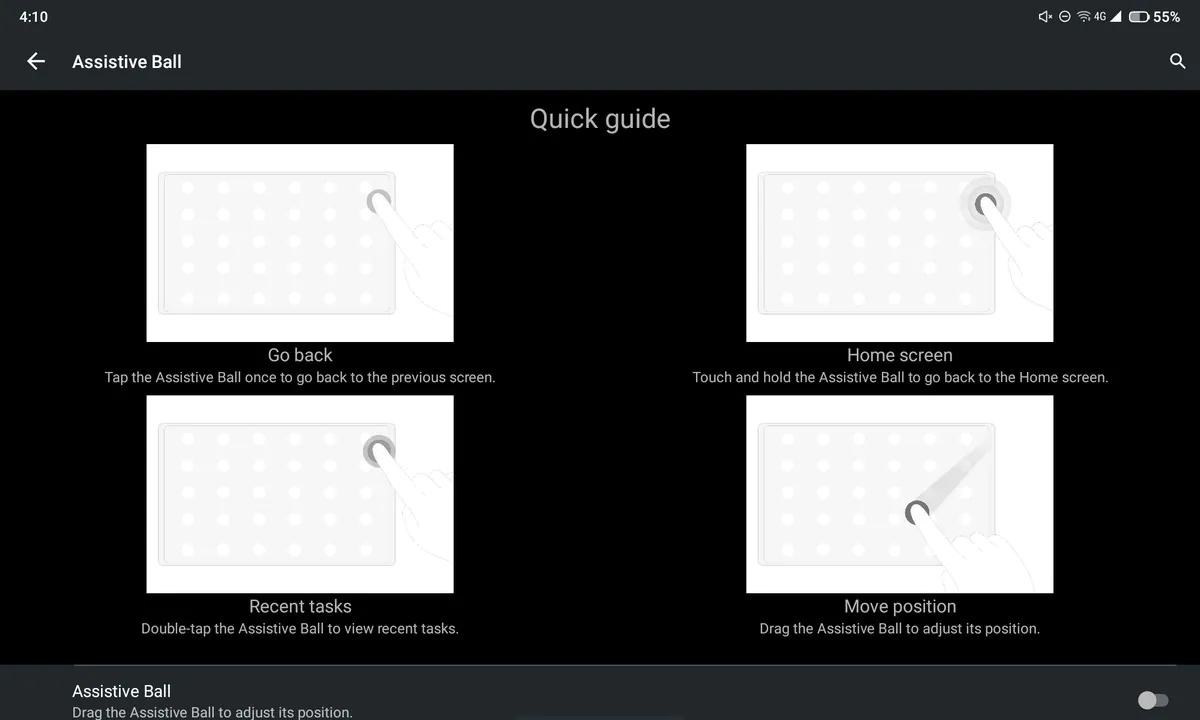© ROOT-NATION.com - Use of content is permitted with a backlink.
In the fall of 2021, realme introduced its first tablet, the realme Pad. As is usual among different realme devices, the tablet turned out to be quite interesting in terms of technical characteristics and inexpensive as well. In this review, we will get acquainted in detail with it and find out what the brand new realme Pad is capable of.
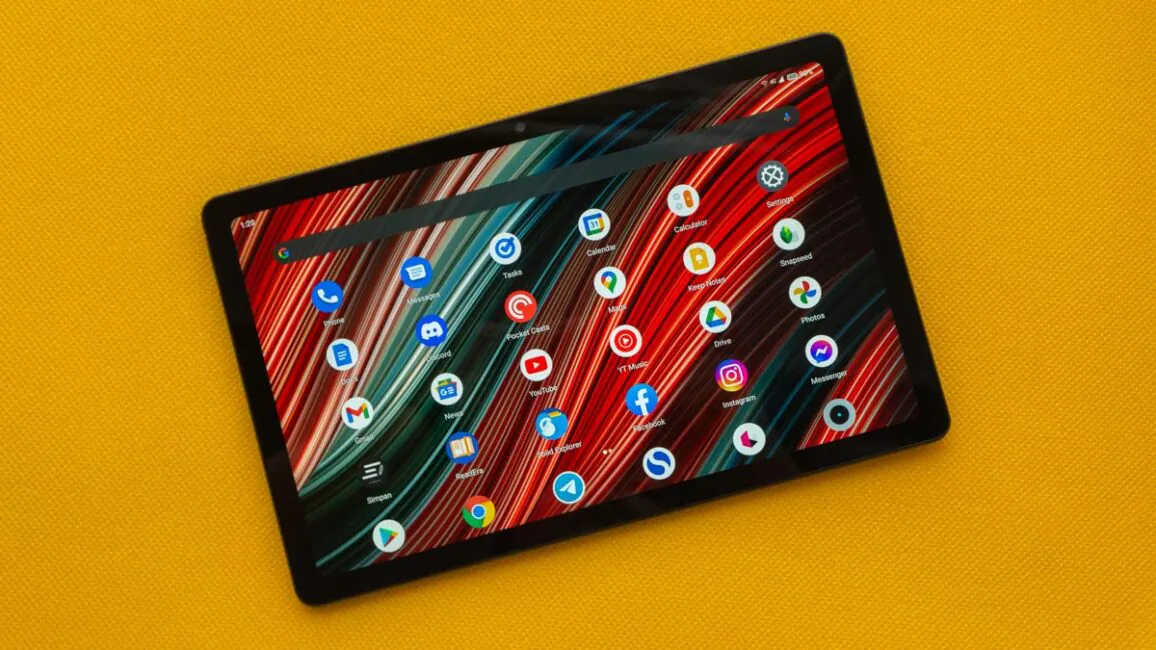
Full specifications of the realme Pad
- Display: 10.4″, IPS LCD, 2000×1200 pixels, aspect ratio 5:3, 224 ppi, 360 nits, 60 Hz
- Chipset: Mediatek Helio G80 (MT6769V/CU), 12 nm, 8-core, 2 Cortex-A75 cores with a clock frequency of 2.0 GHz, 6 Cortex-A55 cores with a clock frequency of 1.8 GHz
- Graphics accelerator: Mali-G52 MC2
- RAM: 3/4/6 GB, LPDDR4X
- Storage: 32/64/128 GB, eMMC 5.1 microSD memory card support: up to 1024 GB
- Wireless networks: Wi-Fi 5, Bluetooth 5.0 (A2DP, LE), GPS (A-GPS, GLONASS, BDS), LTE (optional)
- Main camera: 8 MP, f/2.0, 1.16µm, 28 mm, AF
- Front-facing camera: 8 MP, f/2.0, 1.16µm, 14 mm, 105°
- Battery: 7100 mAh
- Charging: 18W wired, reversible
- OS: Android 11 with realme UI for Pad 1.0 shell
- Dimensions: 246.1×155.9×6.9 mm
- Weight: 440 g
Positioning and the price of the realme Pad
The realme Pad is so far the only tablet of the manufacturer, and since the realme brand mainly makes inexpensive devices, they also made their first tablet quite affordable. It exists in several modifications and with different amounts of RAM and storage. The most affordable basic version comes with 3/32 GB, the middle config has 4/64 GB, and the top one offers 6/128 GB. It is also commendable that the tablet comes in both Wi-Fi and LTE versions at the buyer’s choice. However, the availability of one or another version will depend on your region.
What’s in the box
In addition to the realme Pad, in a medium-sized cardboard box, which, suddenly, is decorated in white tones, you can find an 18-Watt power adapter, a meter-long USB Type-A/ Type-C cable in white, a SIM eject tool and accompanying documentation. There are no other original accessories in the set, like a case or a stylus, and they are also not sold separately, by the way. Although this is not surprising, given the low price tag of the device itself.
Read also: realme C25Y review: solid battery life and a 50 MP camera
Design, materials and build quality
The design of the realme Pad is quite uncomplicated. It is extremely concise, simple and without any unique features or similarities with other devices of the manufacturer. Nothing special can be said about either the front or the back panel — the usual story with inexpensive tablets.
There are bezels around the screen in front and they are not the thinnest. But at least they are symmetrical. The corners of the screen are rounded in the same way as the corners of the case — it looks more aesthetically pleasing. The relatively large eye of the front camera stands out too much.
There is almost nothing to catch the eye from behind, except for a couple of small details. In the upper corner there is a round module with a single camera in silver edging and a small pattern in the form of concentric circles. Under it there is the same silver strip that divides the back and the ends into two parts: the metal and the plastic one. It is strange that the manufacturer calls this case “seamless”.
The material of the two parts is different and therefore, in reality, they differ slightly in color. There are only two colors available: Real Gray and Real Gold.
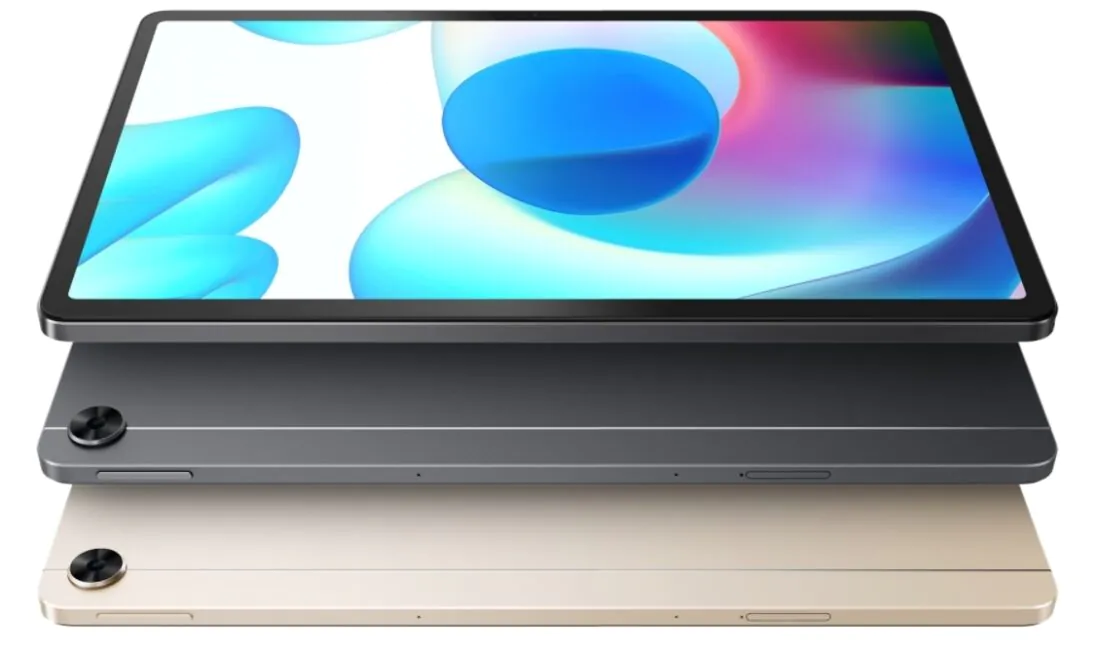
The front panel of the tablet is covered with glass with a good oleophobic coating. The case, as I noted earlier, is divided into two parts and this separation runs not only along the back, but also along the edges of the tablet. One of them is actually plastic, which is why the case cannot be called all-metal. The rest of the edges and the main part of the back are aluminum, with a slightly rough matte finish.
The build quality is really nice. The case does not play, does not make extraneous sounds and does not bend when pressed, although it is slightly malleable to twisting. The back gets dirty slowly over time with active use.
Read also: Realme GT Neo 2 review: Almost a flagship killer
Layout
We will describe the layout of the elements in the vertical position of the device. To the right of the screen in the center there is a front-facing camera and a light sensor. They will also be located on top if you place the tablet horizontally.

On the right side there is a volume control key, an array of two microphones and a slot for a card/cards. Our model has LTE and a combined slot: either for two SIM cards, or for linking a SIM card with a microSD memory card. In the Wi-Fi version there is a single slot only for a memory card. The left edge is completely empty.
From above you can see the power key and a pair of multimedia speakers. On the bottom edge there are the same two multimedia speakers, a USB Type-C port in the center and a 3.5mm audio jack almost in the corner. The placement of the latter is non-standard and not very convenient either.
At the back in the upper left corner there is only a camera peephole. Unfortunately, there is no flash here either. In the lower right corner there is a horizontal realme logo. Also speaking about the previously mentioned plastic insert, it is worth noting that it is here for a reason — it hides the antennas of wireless modules.
Ergonomics
In terms of dimensions, the realme Pad is quite comparable to other similar devices with a 10-11″ screen (it’s 10.4″) and does not stand out in any particular way: 246.1 × 155.9 mm. The thickness of the case is small – 6.9 mm, and the weight is 440 g, also not much. This tablet is more compact than the 11-inch Xiaomi Pad 5, although realme is not quite perfect in terms of usability due to some points. But first, the positives.
The distribution of the mass of the device as a whole is comfortable. The tablet can be held in absolutely any position. In vertical or horizontal orientation, both with one hand and with two neither side outweighs the other. The flat edges of the case do not dig into the palm of your hand. In any case, I did not feel any discomfort at all.
Despite the slightly protruding camera eye at the back, the realme Pad lies quite stably on a flat surface. It does not sway at all when tapping on the screen, which is commendable. The physical buttons are on different sides and when using a tablet, it is advisable to always keep them on top. And both in a vertical and horizontal position. This way it will not only be easier to remember their placement, but it will also be somewhat easier to use.
Now I will tell you about the nuances of ergonomics that I noticed. They are mainly related to the audio component of the device. First of all, it is worth mentioning the location of the speakers — in landscape orientation, it is easy to cover some of the speakers with your palms. The second point is connected with the placement of a 3.5 mm audio jack, which is located almost at the corner from the bottom right.
This arrangement is unfortunate because the plug interferes with the normal grip of the tablet. The grip has to be shifted closer to the middle of the edge, and while it’s okay for watching videos (although inconvenient), in the games, where most of the controls are concentrated at the bottom of the screen, it’s the whole other situation. As you can see, the location is very inconvenient.
Read also: Realme 8 review: Modern mid-range classic
Display
The realme Pad is equipped with a 10.4-inch IPS LCD display. The resolution of the panel is slightly non-standard, WUXGA+ or 2000×1200 pixels. This resolution is possible due to the unusual aspect ratio, 5:3. The pixel density is 224 ppi, the refresh rate of the screen is 60 Hz. Among other things, the manufacturer promises a typical maximum display brightness of 360 nits.
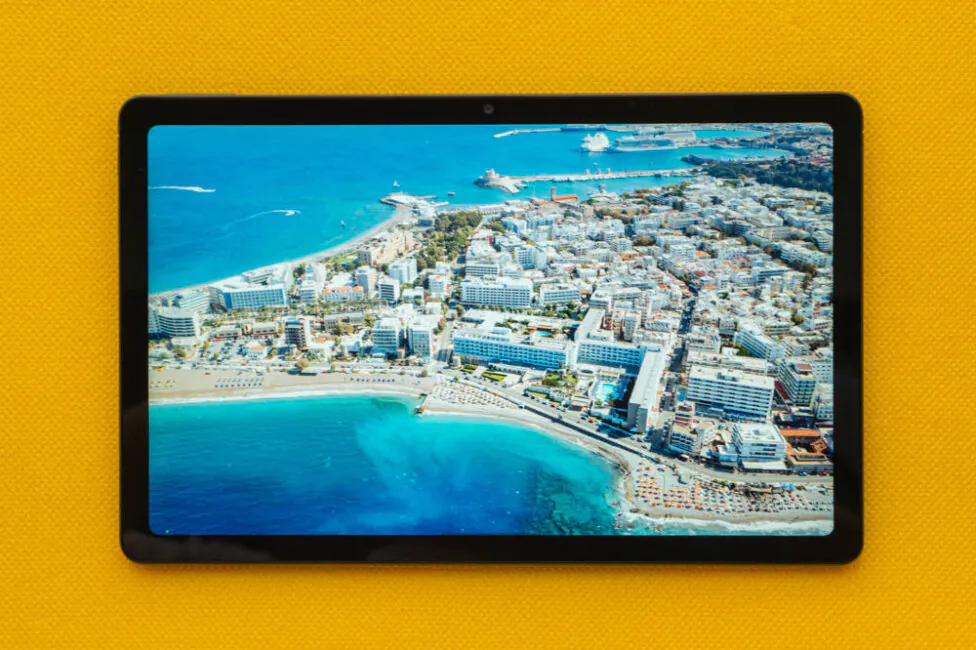
The quality of the picture (keeping in mind that this is an inexpensive tablet) is good. The brightness reserve is more than enough for comfortable use of the device indoors, and I was also surprised by a fairly high level of contrast, as for an IPS panel in a budget device.
The colors are nice — they are moderately saturated by default, but it is impossible to correct the color rendering. The viewing angles are the most standard, not bad. When viewing diagonally, as always, dark tones fade a little, but I didn’t notice any other color distortions.

In everyday use it’s fine, but if you look closely at some elements on the screen, you will notice not the highest pixel density. But again, the tablet is inexpensive.
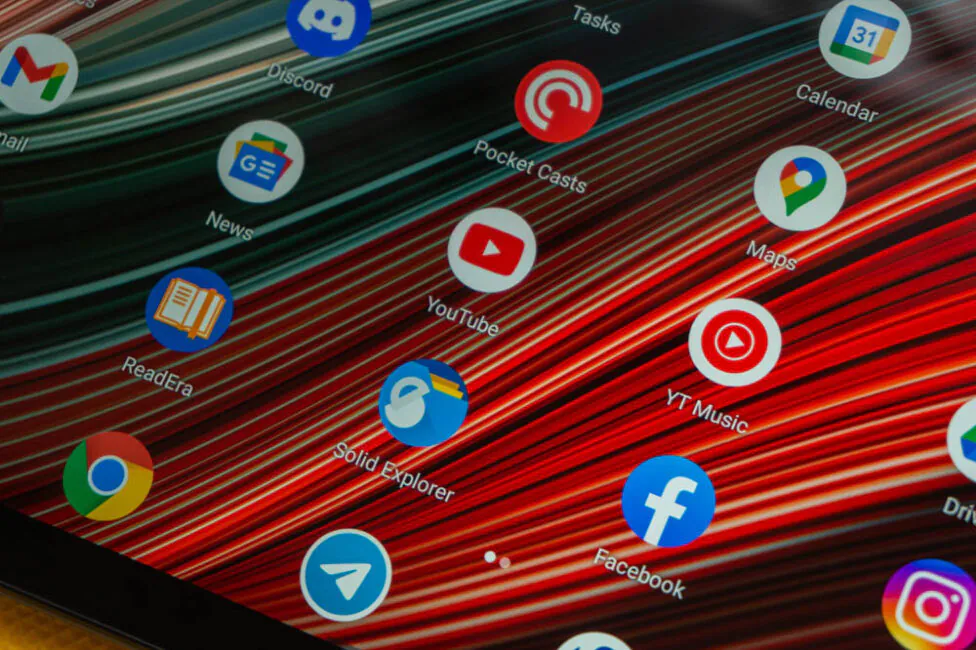
The realme Pad has adaptive brightness which barely works. Firstly, the brightness changes quite slowly, and secondly, not very accurately.

There are few screen settings available. The brightness adjustment, light/dark system theme, night illumination and reading mode. The first allows you to reduce the level of blue glow, and the second puts the screen in black and white mode. The other options are standard: auto-rotation, font size, image scale, splash screen, and so on.
Read also: Realme GT Neo 2 review: Almost a flagship killer
Performance
The realme Pad is not based on the Mediatek Helio G80 (aka MT6769V/CU, the aging mid-range chipset. The chip is based on a 12-nm process technology and includes 8 cores, which are divided into two clusters: 2 high-performance Cortex-A75 cores operate at a maximum clock frequency of 2.0 GHz, and the remaining 6 cores are less productive (Cortex-A55 with a clock frequency of up to 1.8 GHz). The graphics accelerator is a dual-core Mali-G52 MC2 with a frequency of 950 MHz.
The platform does not offer high level of performance, because it is designed primarily for budget devices. In synthetic tests, the results are quite modest, but the throttling is minimal. In the corresponding test lasting 15 and 30 minutes, the chip performance is reduced by a maximum of 11-12% of the maximum. Heating under load is weak, not least due to the metal back.
The amount of RAM depends on the specific modification of the Pad. Often a tablet comes with 3/4 GB of RAM, but judging by our test sample, there is an option with 6 GB. The memory type is LPDDR4X. The most basic model with 3 GB of RAM is hardly capable of multitasking, but 6 GB is fine enough.
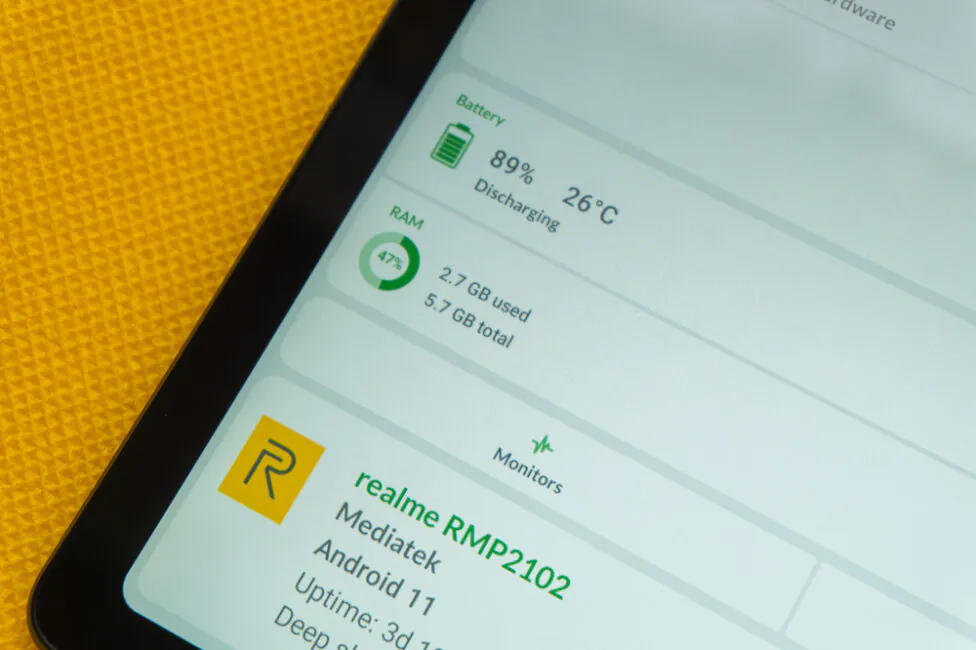
You get at least a 32 GB drive, and a 64 GB option is also available. We got the maximum 128 GB version. The drive is also not the most modern and fast (type eMMC 5.1). Out of 128 GB, 107.94 GB is available for the user, but the storage can be additionally expanded with a microSD memory card up to 1024 GB.
The tablet UI is neither fast nor smooth. There are often delays in system animations, there are noticeable lags when scrolling, but I have suspicions that this is due to software. The tablet’s firmware currently leaves much to be desired, but I’ll tell you about all its issues a little later.
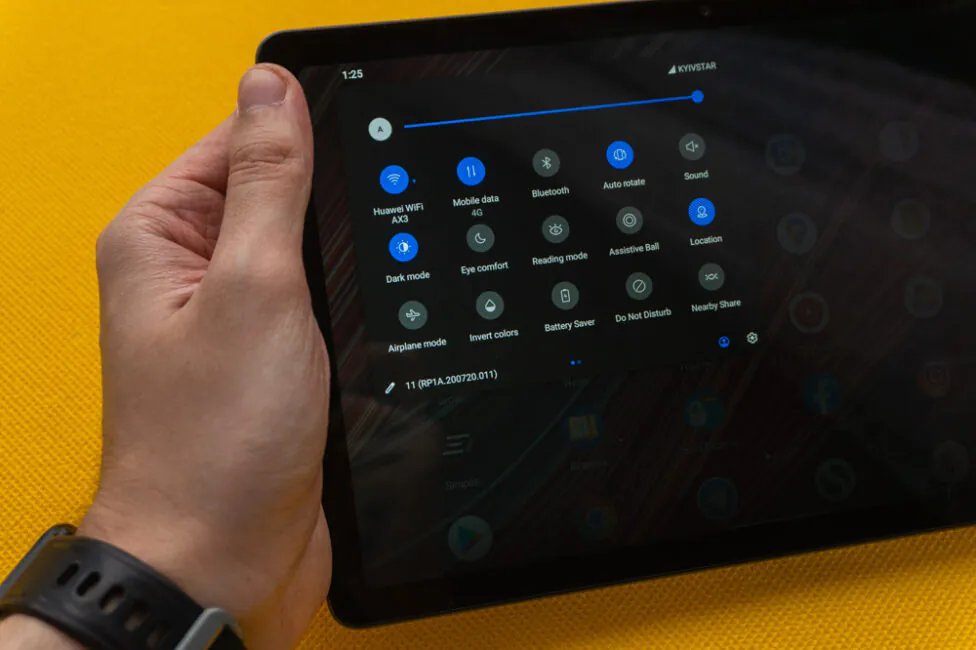
In demanding games, the realme Pad shows average results, which, however, was predictable. Many games have limitations when it comes to the graphics settings. It means that they look quite bad on the big screen. Simple arcade games run great, but in other cases you will have to rely more often on medium settings. Below are some examples of resource-intensive titles and measurements of the average frame rates, which were taken using the GameBench utility:
- Call of Duty: Mobile – medium, real-time shadows, Battlefront mode ~57 FPS; Battle Royale ~40 FPS
- PUBG Mobile – high settings, 2x smoothing, with shadows ~30 FPS (game limit)
- Shadowgun Legends – average, 60 FPS limit, ~54 FPS
Cameras
The main camera module is 8 MP tablet, with an aperture of f/2.0, a pixel size of 1.16µm, an EFL of 28 mm and full autofocus (AF). The usual, you shouldn’t expect anything special from a tablet camera.
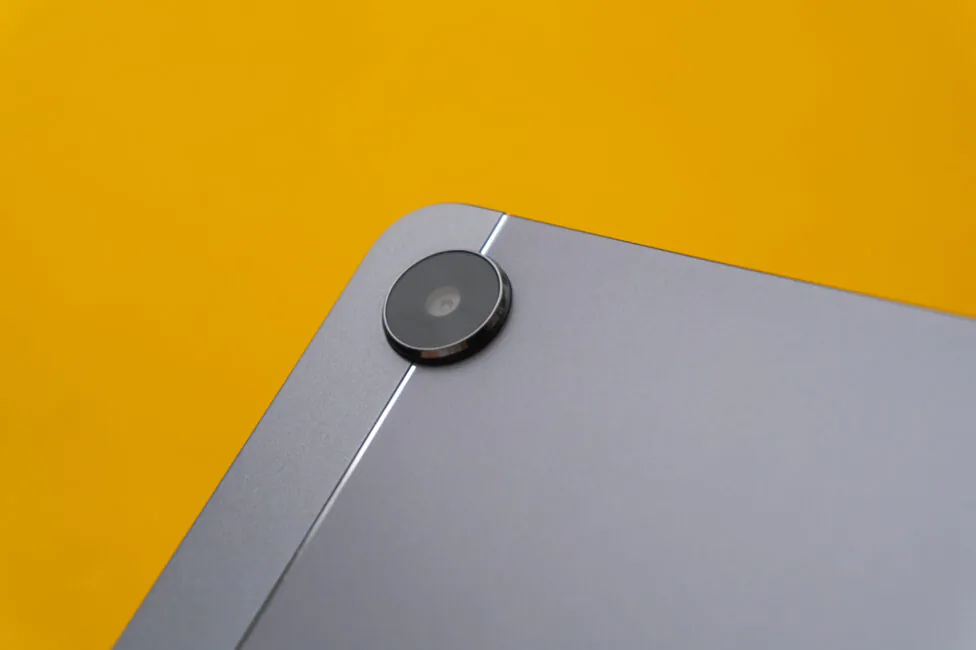
It shoots okay in excellent lighting, producing photos with acceptable detail and natural color reproduction. With worse lighting we get digital noises. But in general, this camera is enough for documents or personal use.
You can shoot video on the main camera in maximum 1080P resolution at 30 FPS. The videos are mediocre on all fronts: some are dark, sometimes with an unnatural white balance, with a small number of details and without electronic stabilization.
The manufacturer itself places more emphasis on the front camera of the tablet. The module itself is exactly the same: 8 MP, f/2.0, 1.16µm, but without autofocus and with a different focal length (14 mm). The viewing angle is 105° which is very much like for a front-facing camera.

The camera lacks detail, but the quality is enough for video calls. The video has a 1080P resolution with 30 FPS. You also get pretty good microphones.
The camera app is as simple as possible. There are buttons for fast 2- and 5X digital zoom, as well as a timer. There is nothing special in the settings either: you can choose where to save photos/videos, adjust the action when pressing the volume buttons, shutter sound, grid, resolution, flicker suppression, etc.
Read also: Xiaomi Mi 11i review: the most affordable flagship on Snapdragon 888
Unlocking
There’s only face recognition unlocking. No fingerprint scanner. And to be honest, the wide angle is good for video conferencing, but bad for recognition.

Face registration is possible only at a small distance between the face and the tablet. Even from half a meter, the tablet cannot detect a face, so I managed to add it only on the third attempt. And even then, bringing the device close to the face. Often the tablet does not recognize you for the first time and you have to find a different angle or distance.
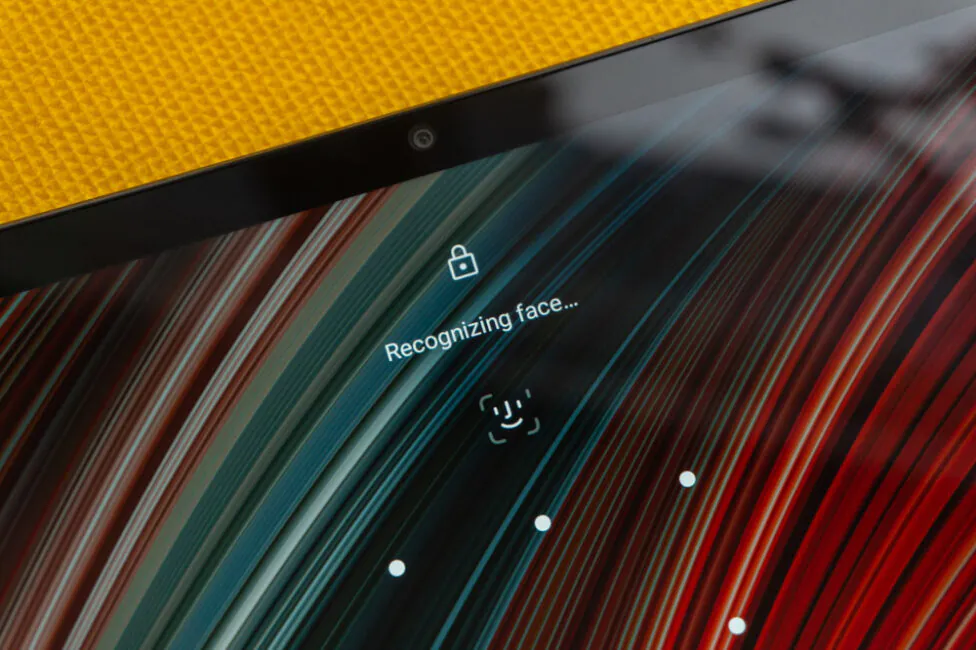
It works best in good light, and in the dark you can not even try to use this method. The unlock speed is slightly above average. By itself, the method is not very safe, and of the additional options there is only a choice between auto-unlocking and pre-displaying the lock screen (you need to manually swipe up).
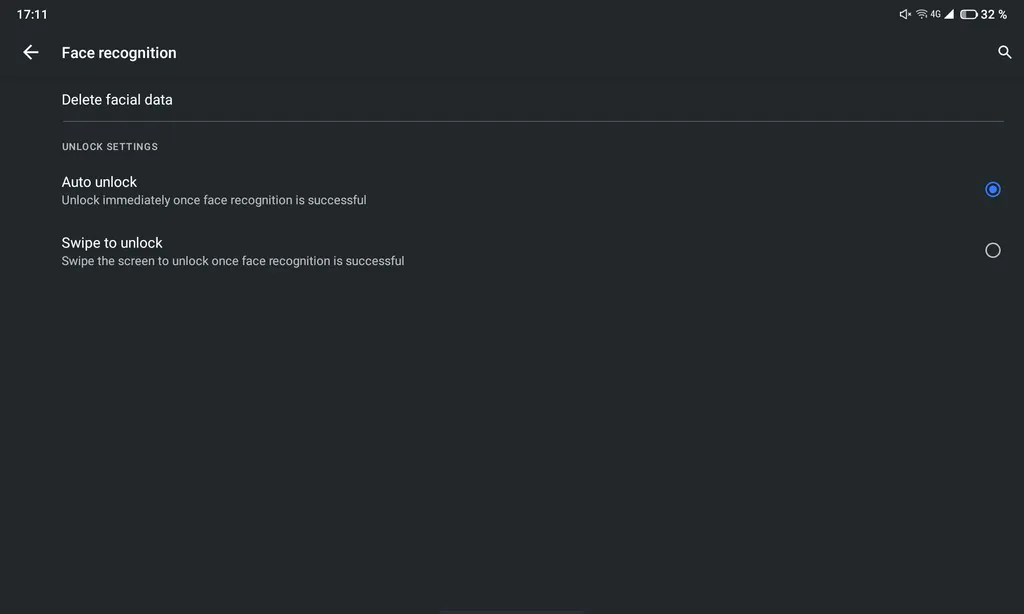
Battery life
The battery in the realme Pad is 7100 mAh which is ok, as for an inexpensive tablet of this size. Realme promises the battery will last for 12 hours of video playback, and in standby mode the tablet will allegedly be able to last 65 days. In practice the figure is very close to reality.
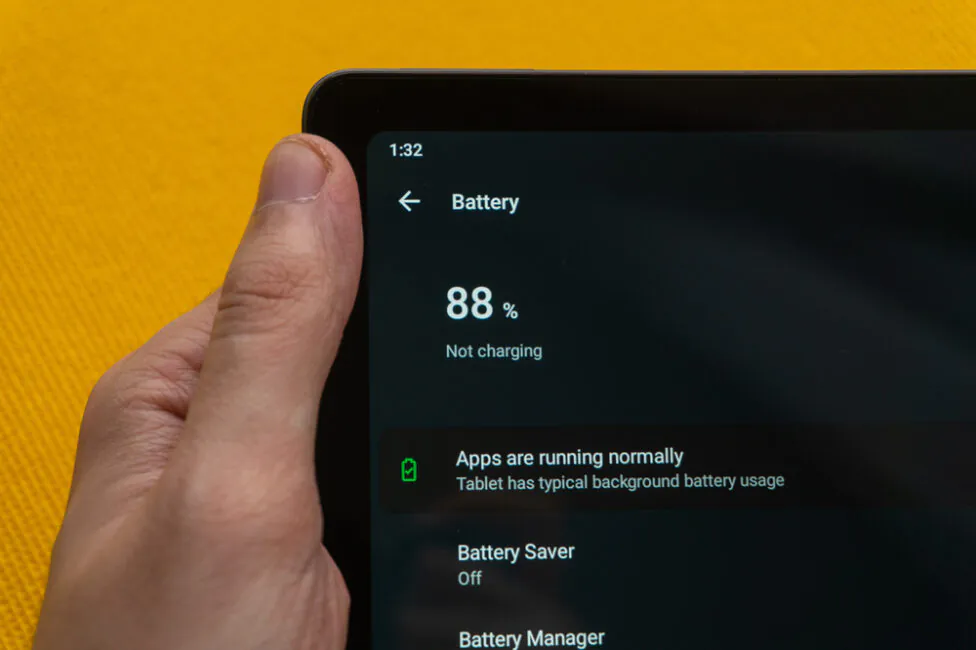
The operating time, as usual, will directly depend on the intensity of use. If you actively use the tablet throughout the day (social networks, browser, watching videos, listening to music), then it will easily last the whole day with a total of 10 hours of active screen on average. With less active use during the day, but in a similar mode, you can count on 2-3 days of work with 7-8 hours of the screen on. Alas, but the current software does not allow you to evaluate the battery life of the realme Pad. The traditional PCMark Work 3.0 test shows an error a few minutes after launch.
The manufacturer mentions that the tablet supports fast charging (18 watts). However, it’s not fast at all, because it will take more than 3 hours to fully charge the tablet. Of course, it’s a big battery and it will take longer to charge, but nevertheless. By modern standards, this is by no means fast charging, even among tablets. Below are detailed measurements of the battery recharge rate from 3% to 100%:
- 00:00 — 3%
- 00:30 — 24%
- 01:00 — 46%
- 01:30 — 67%
- 02:00 — 87%
- 02:30 — 96%
- 03:00 — 100%
It is curious that the tablet can also act as an external battery, because it supports wired reverse charging. It can be used to charge a smartphone, headphones or other small electronics. To do this, you only need an appropriate USB-C cable.
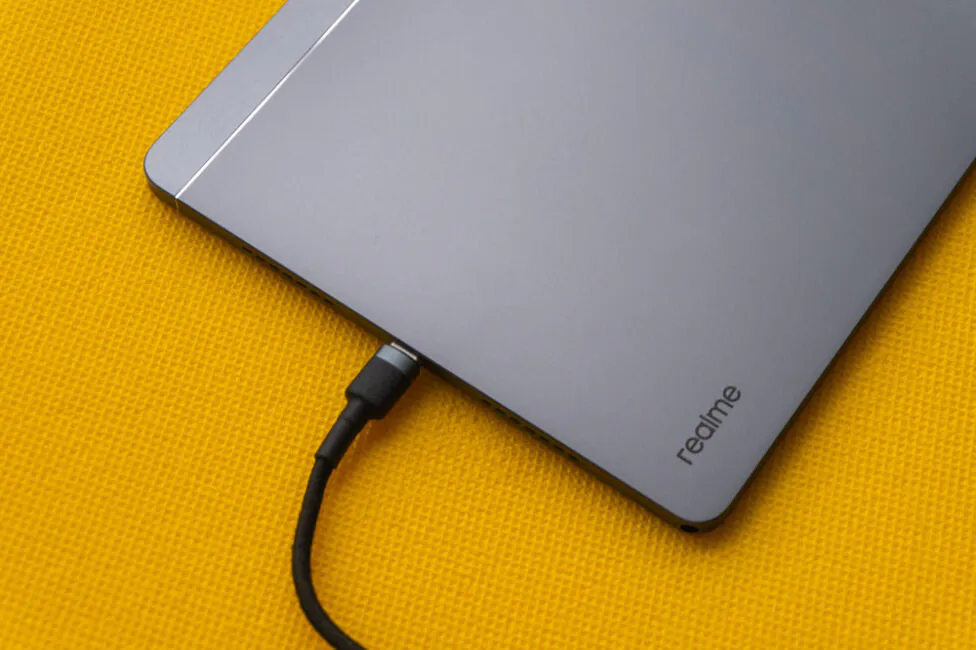
Sound are wireless data
The realme Pad received four multimedia speakers with Dolby Atmos technology support, a smart amplifier and adaptive surround sound. And as for a budget tablet, this quartet sounds great. The sound is very loud, voluminous, with well-developed medium frequencies, but worse highs and lows. Of course, the sound is not as clean as that of expensive tablets, but in general it is suitable for everything.
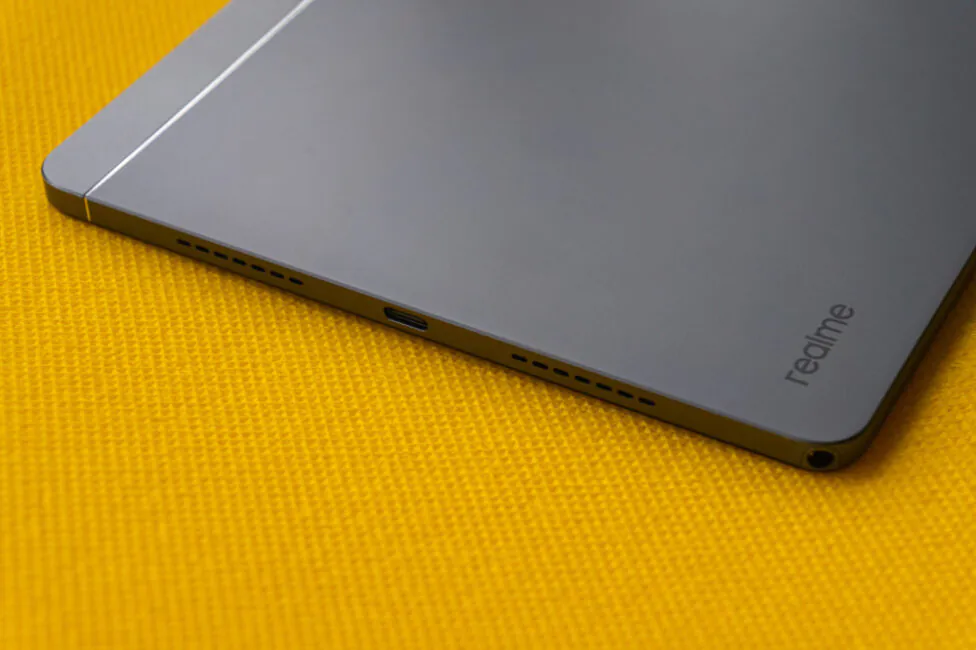
In wired/wireless headphones, the tablet sounds good too. Interestingly, it has Hi-Res Audio certification, but only for the USB Type-C interface. In the settings there is a Dolby Atmos function with three profiles: speakers, movies and music. The first one is enabled by default and the sound is really better with it than with the effects turned off. Plus there is BesLoudness – amplification of the volume of the speakers.
There are a lot of wireless modules in the realme Pad: dual-band Wi-Fi 5, Bluetooth 5.0 (A2DP, LE) and even GPS (A-GPS, GLONASS, BDS). They all work well. Also, do not forget about the version of the tablet with LTE support which supports SIM cards (and even more than one) in order to have constant access to the Internet, for example.
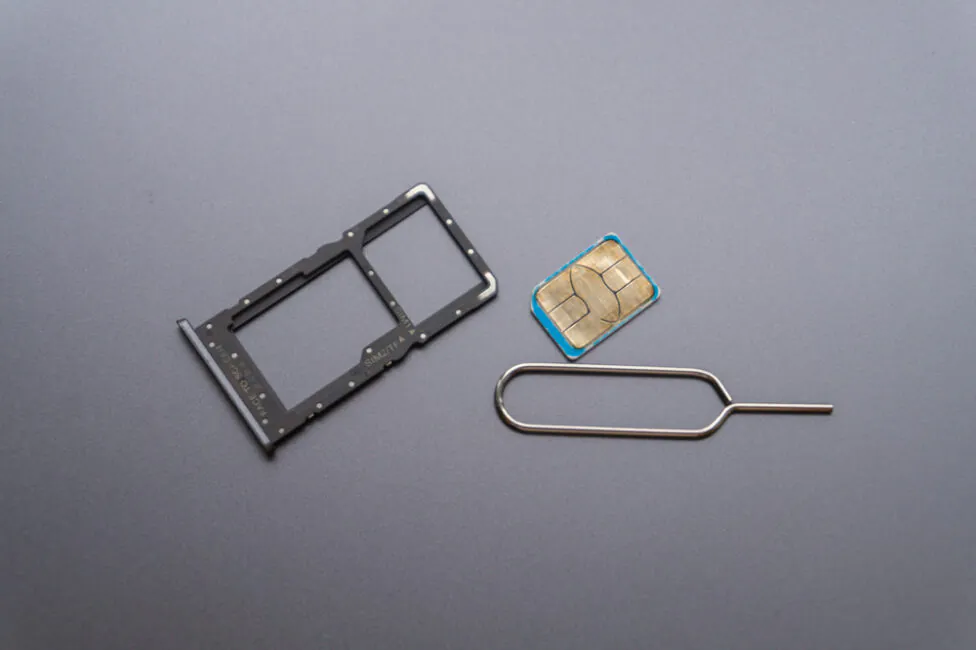
Read also: Redmi Buds 3 review: Light and affordable TWS buds
Firmware and software
So we got close, perhaps, to the most ambiguous feature of the realme Pad – the software. The so-called realme UI for Pad 1.0 based on Android 11 is used as a shell. But the thing is that it has little in common with the realme UI on smartphones. This applies to both the visual part of the shell and the functional part, not to mention its stability and performance. The firmware is more like a pure Android, where a number of standard icons were replaced, and instead of the usual system apps from realme, alternative ones from Google were installed.
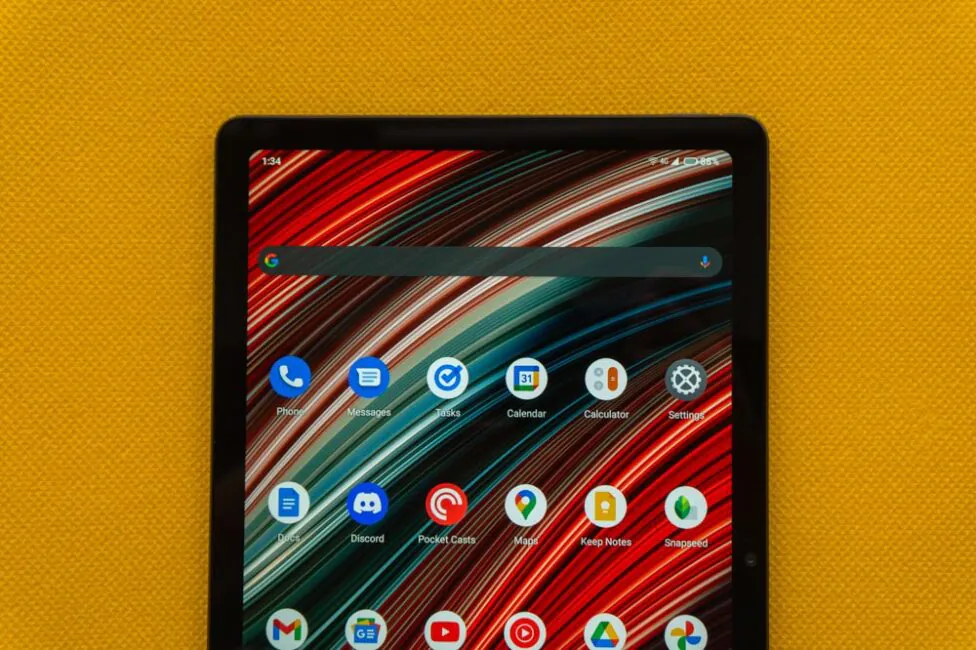
There are no advanced means of personalizing the shell. On the phone you can change the overall style, icons and color palette, but here you can change only the wallpaper and desktop mode, and that’s it. You can’t even change the standard grid of the main screen, and the appearance of some submenus seems to have migrated altogether from the times of Android 4.0 or something, with its Holo design, if you remember it. The same shutdown menu looks extremely strange: a black background and three large white buttons at the very top of the screen. The oddity is that it is always like this and does not depend on the selected system theme of the device.
Well, at least there is a number of quick gestures: there is turning on the camera by double-clicking on the power button, turning off the sound by a combination of the power and volume up buttons, swiping down with three fingers to take a screenshot and double-tap on the off screen to activate it. Navigation is available with full-screen gestures or three buttons at the bottom of the screen, and there’s a button floating on the screen that can also be navigated. Plus, the manufacturer focuses on such functions as unlocking the tablet using a connected wearable device (realme Band/Watch), Nearby Share for fast file transfer between smartphone and tablet. It supports automatic connection of wireless headphones to the tablet (when they are nearby) and sharing the screen to the TV.
Overall, the system is unpolished and raw. Scrolling is not very smooth in places, some system animations lag, and when minimizing apps, the device freezes for a moment and does not respond to swipes and touches for 1-2 seconds. The multitasking menu often disappears when using gestures. When switching between apps, the strip at the bottom disappears, and without it multitasking is not possible. This should not happen and I want to believe that the manufacturer will still work on the software.
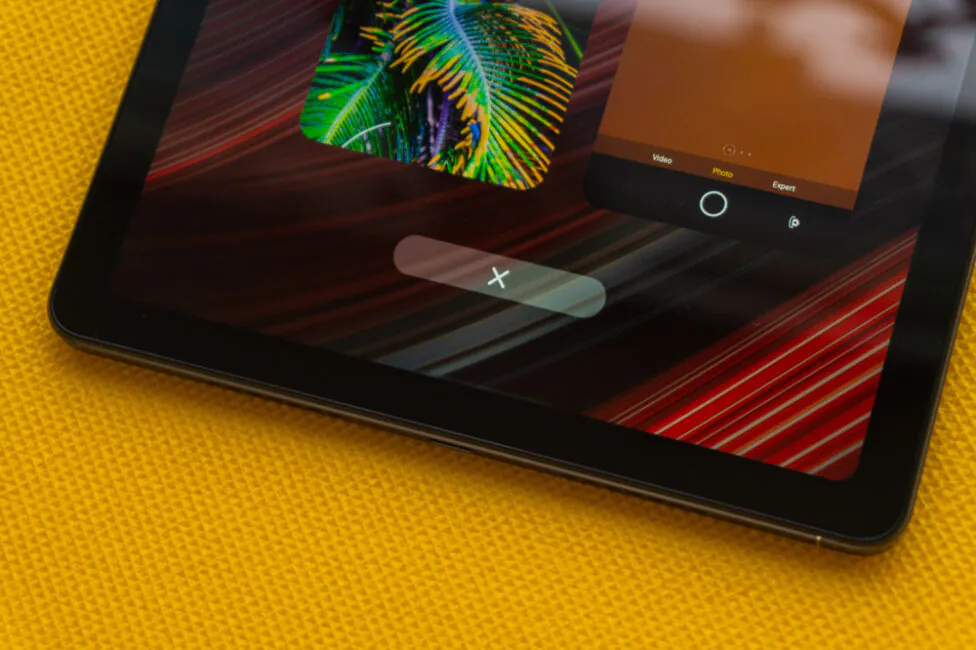
Verdict
The realme Pad is the first tablet from the brand. I would like to praise the company for giving it a try, but it is worth admitting that the first device did not turn out to be perfect, even taking into account the cost. First of all, I was disappointed by a fairly large number of software bugs and flaws. And this is strange, since the smartphones work totally fine.
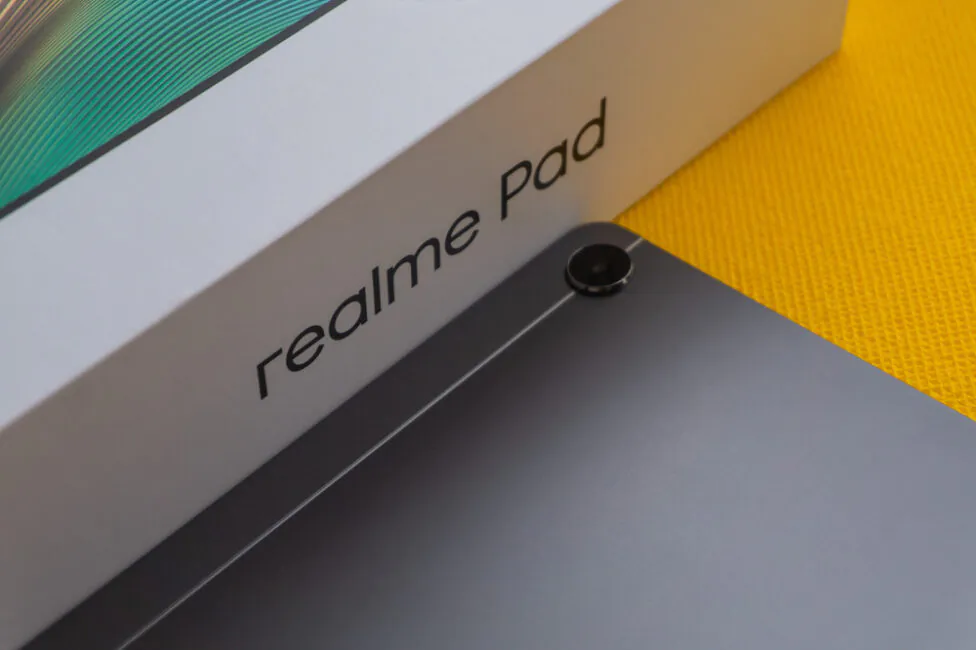
We can only hope that with the upcoming updates, all the issues will be corrected, because otherwise the realme Pad has everything that a budget tablet should have: high-quality materials, a decent screen, good battery life, quality sound, and performance that is enough for media consumption, but not for serious work or overly demanding games.
Read also:
- Realme GT Master Edition vs Xiaomi 11 Lite 5G NE vs Samsung Galaxy A72: 2021’s hottest mid-rangers go head to head
- Redmi Note 10S review: Affordable smartphone with NFC and Super AMOLED
Subscribe to our accounts:


